父親節禮物推介|品味與心意兼備的紅酒套裝及多元選擇
父親節禮物推介|品味與心意兼備的紅酒套裝及多元選擇
父親節禮物推介|品味與心意兼備的紅酒套裝及多元選擇
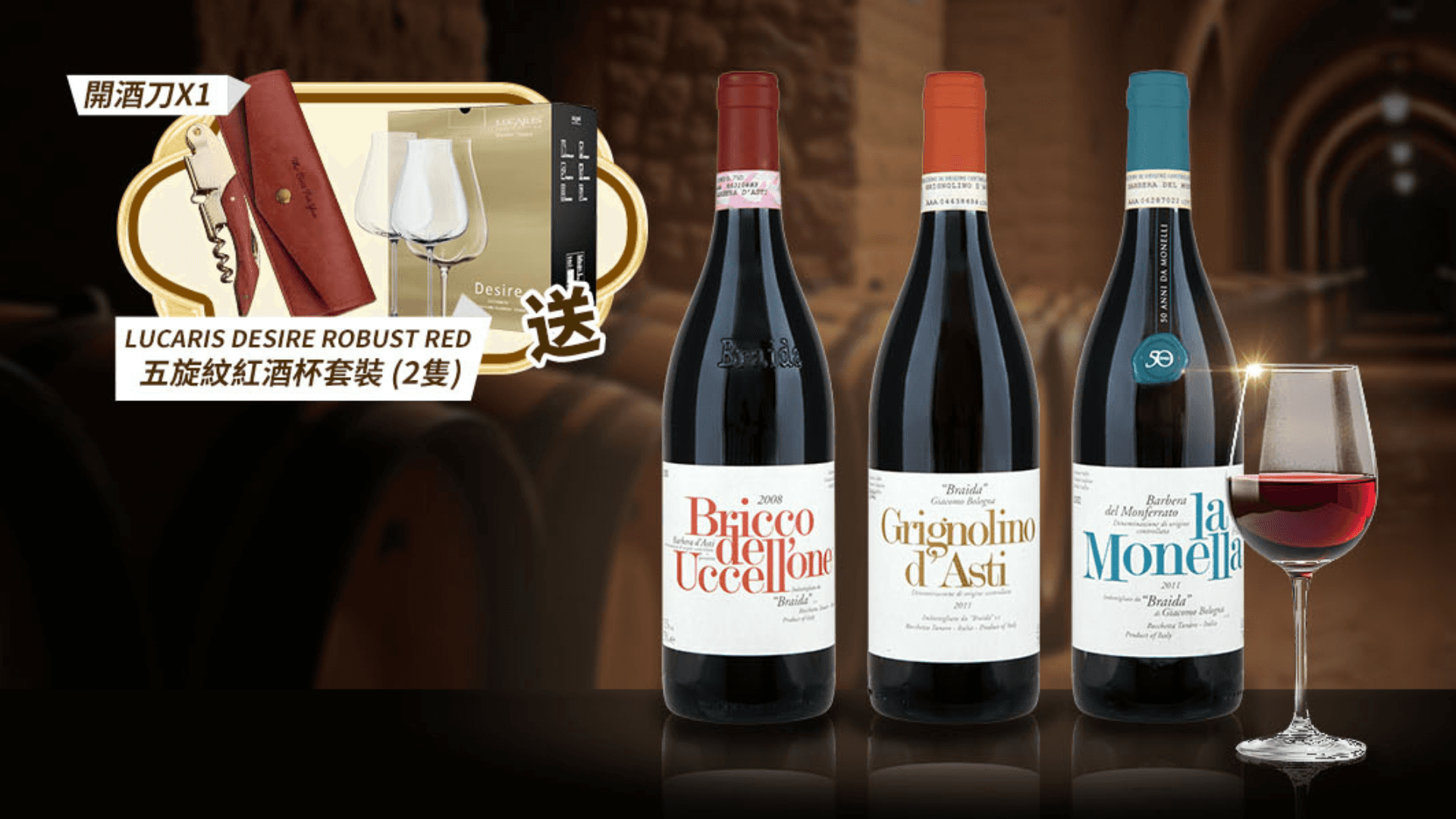


Latest products
Latest products
Latest products
Latest products
父親節禮物推介|品味與心意兼備的紅酒套裝及多元選擇
父親節禮物推介|品味與心意兼備的紅酒套裝及多元選擇
父親節禮物推介|品味與心意兼備的紅酒套裝及多元選擇
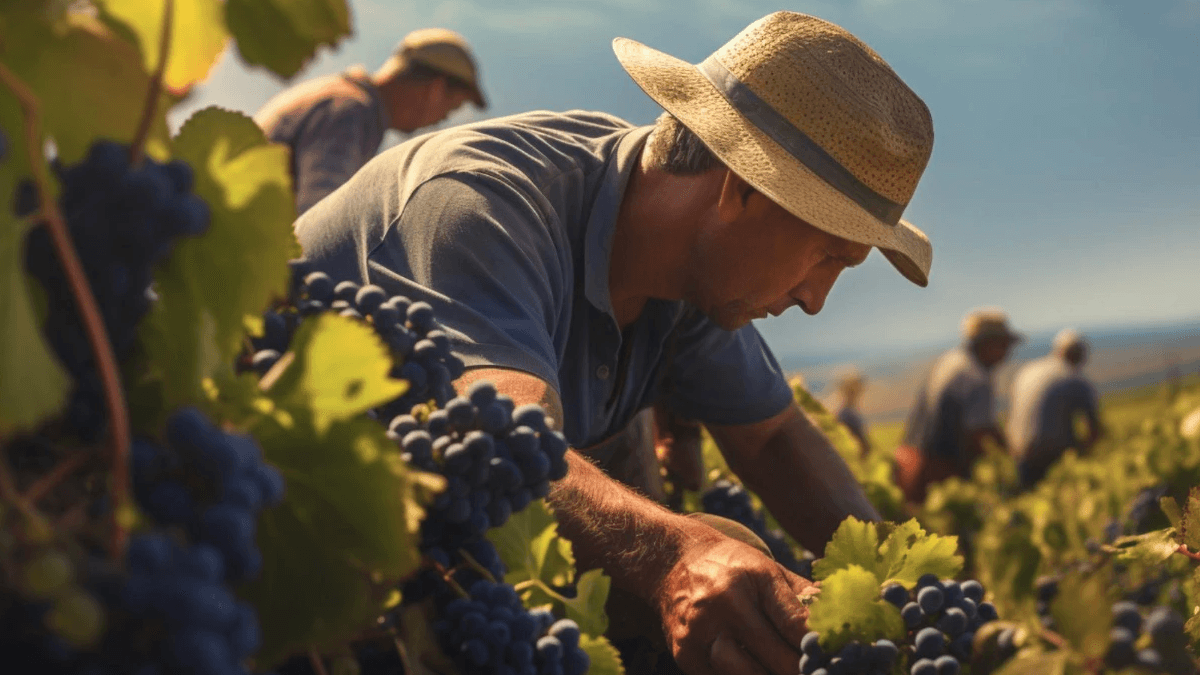


Latest products
Latest products
Latest products
Latest products
Explore the treasures of the Southern Rhône Valley in France: Côtes-du-Rhône Villages wine region
Explore the treasures of the Southern Rhône Valley in France: Côtes-du-Rhône Villages wine region
Explore the treasures of the Southern Rhône Valley in France: Côtes-du-Rhône Villages wine region
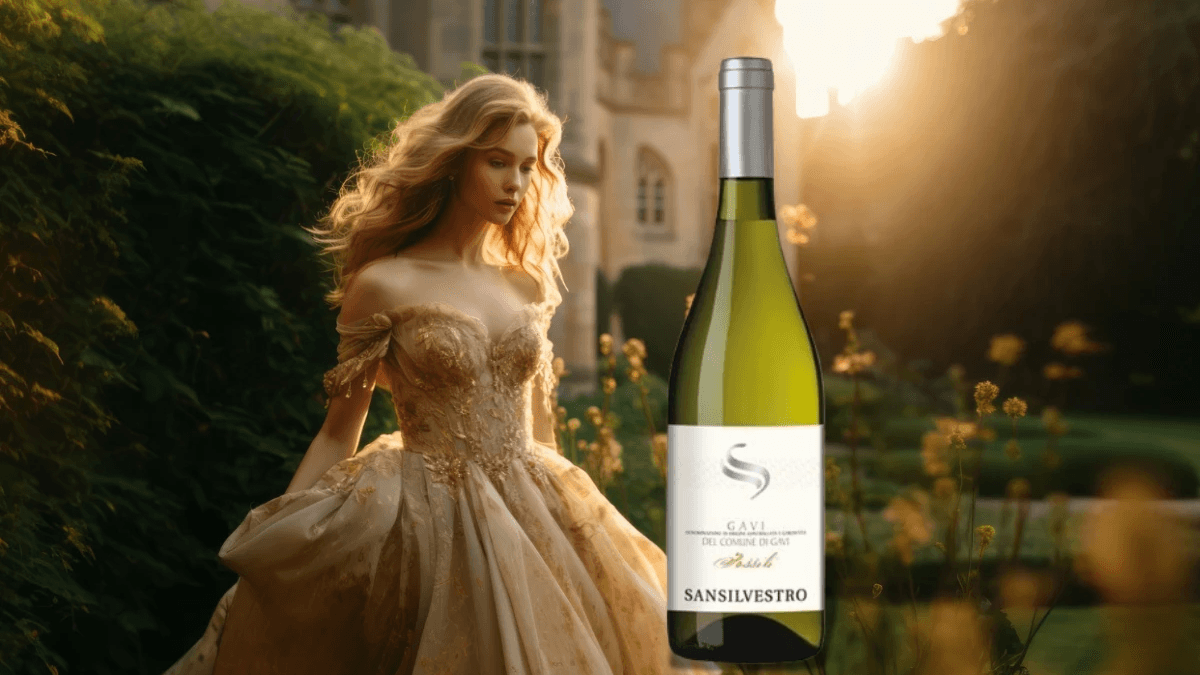
Latest products
The Runaway French Princess: The Legend and Charm of Italian Gavi White Wine
Gavi, a white wine from the Piedmont region of Italy, is known for its long history and romantic legends. It is said that the name Gavi comes from the story of the French princess Gavia. In the late 6th century, the princess chose to elope with her beloved knight to escape the pursuit of her father, King Clodomiro, and found refuge in a small town in Piedmont.
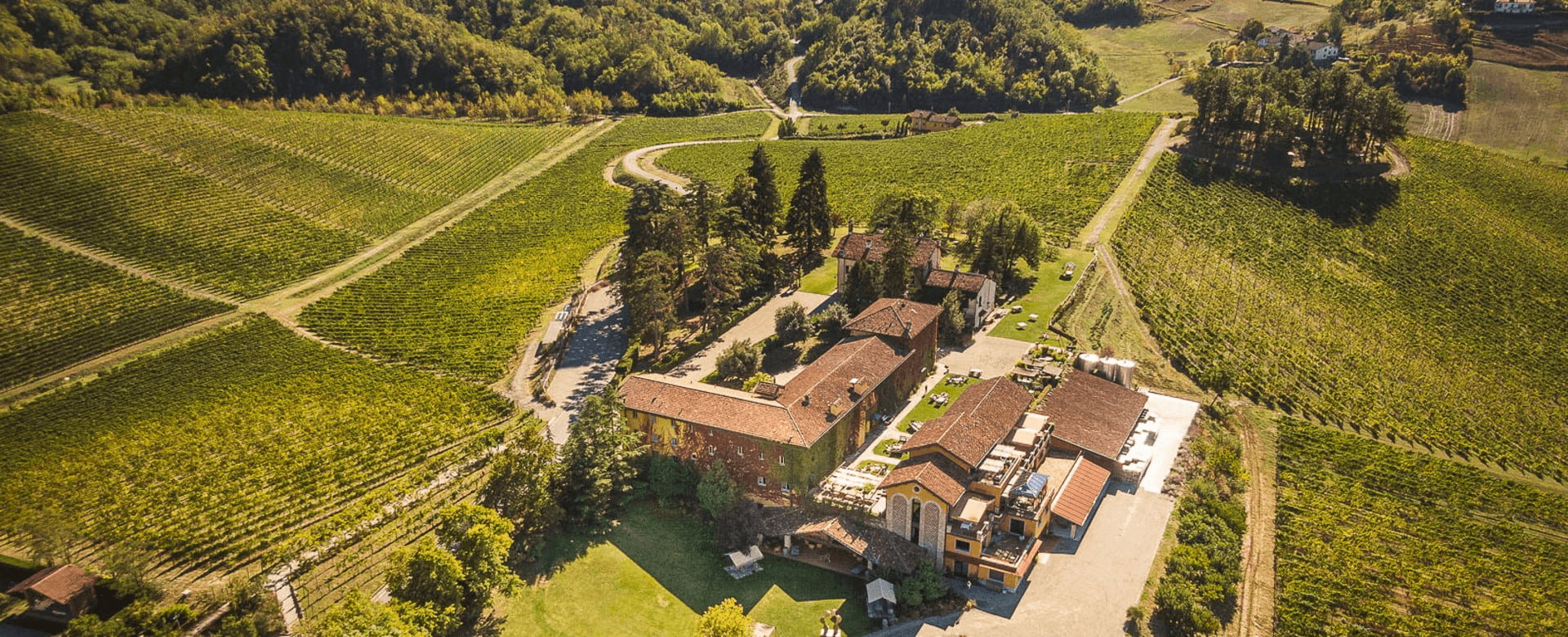
Gavia built a home in the area and established friendly relations with the villagers. She ruled the town for many years, bringing peace and prosperity with her wisdom and leadership. Legend has it that she was buried under a marble altar at the entrance of the castle, where a coat of arms symbolizing the power that once ruled the village is engraved. These coats of arms may pay tribute to this strong princess who shaped the village of Gavi and left behind a romantic and inspiring legacy for future generations. In honor of her courage and kindness, the town was named Gavi, and this land later became the core area for Cortese grape cultivation.
The cultivation history of Cortese grapes in Italy can be traced back to the 17th century and was first recorded at noble banquets in the 18th century. By the mid-20th century, Gavi began to rise to fame as a white wine. In 1974, it received DOC (Denomination of Controlled Origin) certification, and in 1998 it was upgraded to DOCG (Denomination of Controlled Origin and Guarantee) status, becoming one of Italy's first internationally renowned white wines.
What makes Gavi so special lies in its core ingredient—Cortese grapes. These grapes are characterized by their thin skin and high acidity, making them well-suited to grow in the warm and sunny climate of Piedmont. These conditions give Gavi a bone-dry, crisp, and lively flavor, with complex layers of lemon, green apple, honeydew, and almond.

Moreover, Gavi is renowned for its diverse styles, including still white wine, sparkling wine, and classic method sparkling wine. Some high-quality Gavis even have excellent aging potential, developing aromas of honey, nuts, and even petroleum in the bottle. These variations make Gavi not only suitable for everyday drinking but also meet the demand for premium white wines.
It’s also worth mentioning that the soil environment where Gavi grows is diverse, including limestone, mineral-rich alluvial clay, and gravelly soils. Each type of soil imparts different flavor characteristics to the grapes, making every bottle of Gavi unique.
For white wine enthusiasts in Hong Kong, Gavi is undoubtedly an ideal choice, perfectly matching the fresh and crisp palate with Asian culinary culture. Whether paired with seafood, light appetizers, or herbaceous-flavored pasta, Gavi showcases excellent food pairing capabilities.
Additionally, Gavi is reasonably priced but of high quality, with most wines on the market being relatively affordable, making it a cost-effective choice for everyday dining. Coupled with its similarities to renowned white wines such as Chablis or Sauvignon Blanc, those who enjoy fresh white wines are likely to fall in love with it.
Finally, as the Piedmont region is committed to promoting this white wine through events like international wine tastings and masterclasses, more people are becoming aware of Gavi's charm. With 85% of its production exported to international markets, this classic Italian white wine is making its way around the globe.
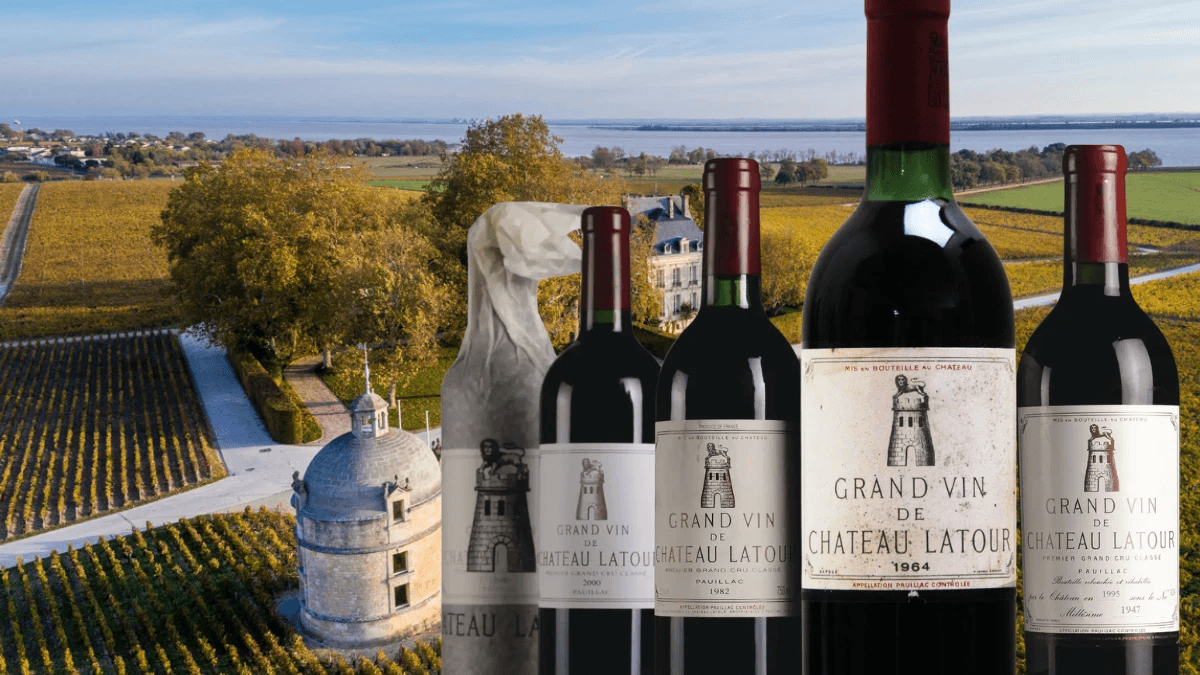
Latest products
Château Latour: The History and Legend of a Top French Winery
Château Latour is one of the top wineries in the Médoc region of Bordeaux, France. Its name "La Tour" comes from French, meaning "the tower" or "defensive bastion," symbolizing its deep historical background. This winery not only represents French wine culture but also stands as an important witness to the Hundred Years' War and European history. The following will delve into four parts exploring the story of Château Latour, product characteristics, tasting recommendations, and the extraordinary charm of the Latour second label.
The history of Château Latour dates back to 1331, when Gaucelme de Castillon was authorized to build a defensive tower in the parish of Saint-Maubert to protect the Gironde estuary from attacks. This tower later became an important strategic point during the Hundred Years' War and changed hands multiple times between the English and French sides. Its name evolved over time to "La Tour en Saint-Maubert," eventually simplified to "La Tour."
By the 17th century, the Latour estate was inherited by the Alexandre de Ségur family, which later acquired several famous estates including Lafite and Calon-Ségur, becoming one of the most powerful wine families of the time. Alexandre's son Nicolas-Alexandre de Ségur was even praised by King Louis XV as the "King of Wine." In the early 18th century, Latour began to emerge in the British market, with wine prices far exceeding ordinary Bordeaux, gaining great fame.
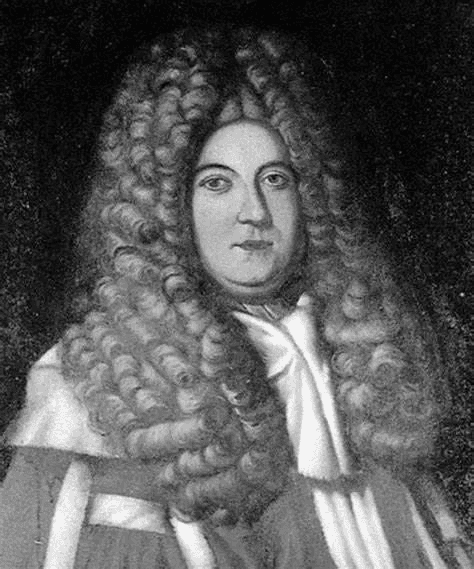
Marquis Nicolas-Alexandre de Ségur
In the 1855 Bordeaux classification, Château Latour was rated as one of the four first growths, a honor that further solidified its position in the global market.
Château Latour has about 78 hectares of vineyards, with the core 47-hectare parcel known as "L’Enclos"; only grapes from this parcel can be used to produce its flagship product "Grand Vin de Château Latour." This plot is famous for its deep gravel and clay soils, providing a unique microclimate and excellent drainage, elevating the grape quality to its peak.
Main Grape Varieties:
Cabernet Sauvignon: over 70% of the blend, providing structure and aging potential.
Merlot: adds smooth texture and balance.
Cabernet Franc and Petit Verdot: enhance aroma and complexity.
The products of Château Latour are divided into three tiers:
Grand Vin: made from vines with an average age of over 60 years, it is one of the most representative top red wines in Bordeaux.
Les Forts de Latour: the second wine, aimed at the mid-market at a more approachable price.
Pauillac de Château Latour: the third wine, more suitable for everyday drinking.
The red wines of Château Latour are known for their rich aromas of blackcurrant, cedar, and tobacco, exhibiting a strong tannic structure and high aging potential. The Grand Vin from top vintages can be stored for decades or even longer, with its complexity enhancing over time.
Tasting Recommendations:
Optimal Serving Temperature: 16°C to 18°C.
Decanting Time: young vintages are recommended to decant for 2 to 3 hours; older vintages should be decanted gently to preserve delicate flavors.
Food Pairings:
Red meat dishes like steak or lamb chops.
Dishes with rich sauces, such as Bordeaux beef stew.
Hard aged cheeses like Parmesan or Comté.
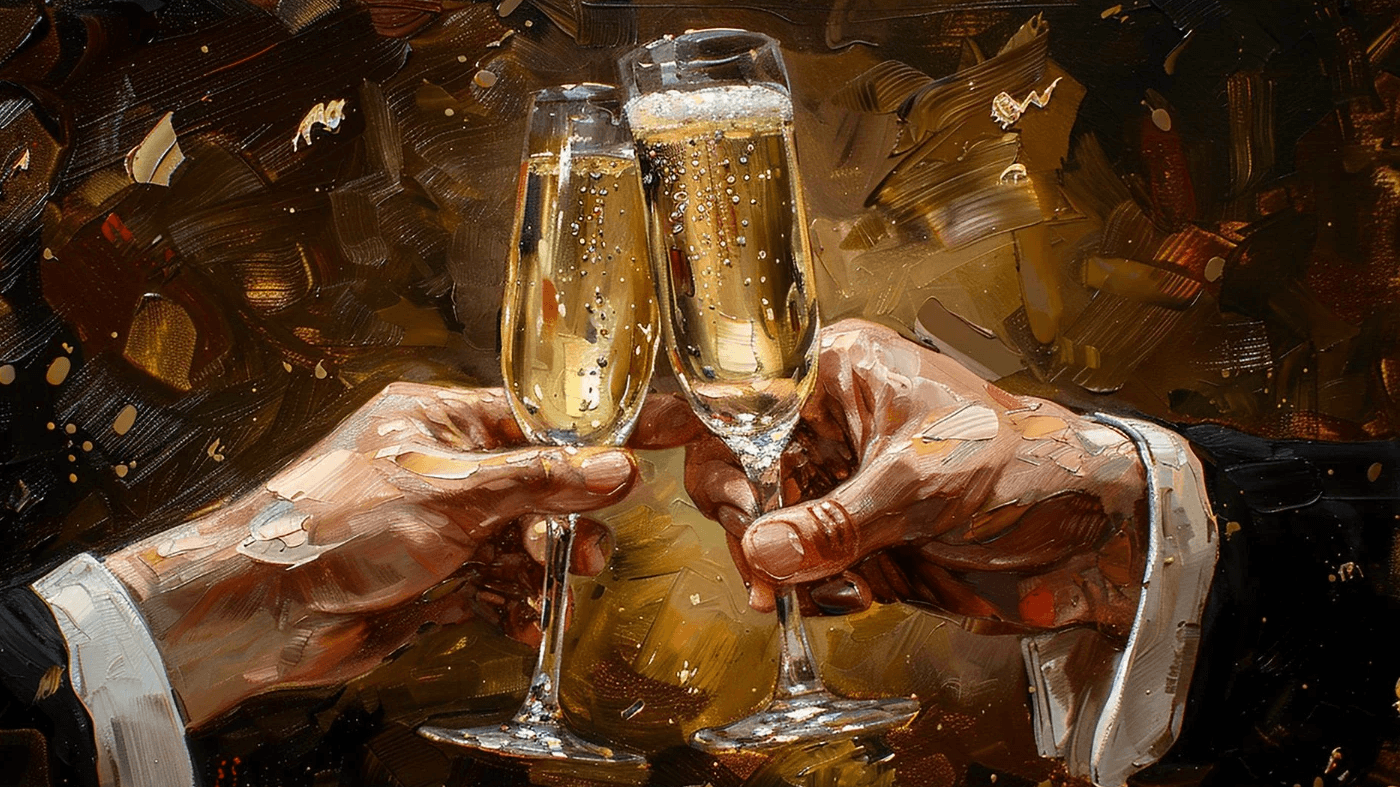
Latest products
Elegance Under High Temperatures: The Story and Investment Value of Aged Champagne
Champagne, as a representative of sparkling wine, has a history that dates back to the late 17th century in the Champagne region of France. The monk Dom Pierre Pérignon is regarded as one of the founders of champagne production techniques. He dedicated himself to improving wine quality and discovered that blending different grape varieties could create a more balanced wine. With advancements in glass bottle manufacturing and the introduction of corks, bubbles were preserved in the bottle, and champagne gradually became a symbol of the nobility and high society.
In 1810, Veuve Clicquot launched the first vintage champagne, opening a new chapter in the champagne industry. Vintage champagne is only produced in years when grape quality is exceptional, requiring at least three years of bottle aging to enhance its rich, layered flavors. This winemaking method has made vintage champagne a symbol of luxury and quality.
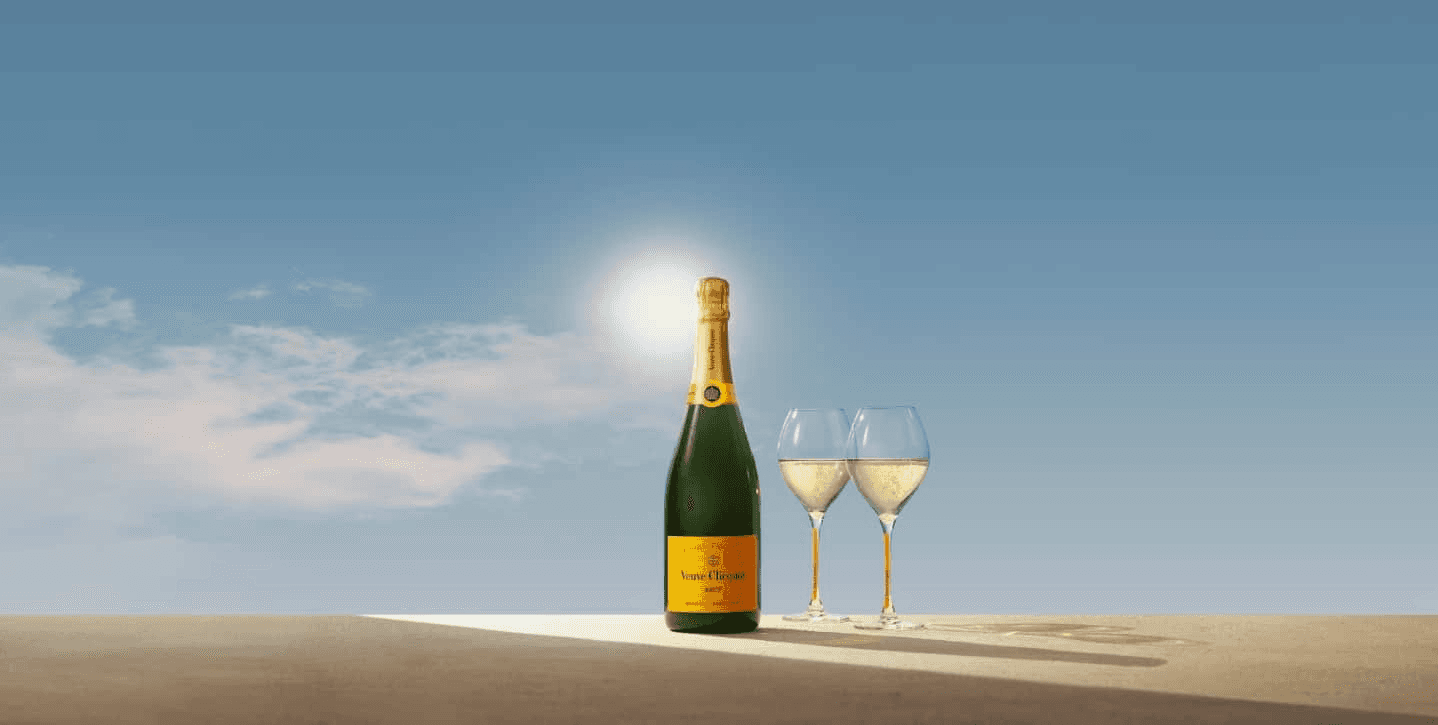
Credit: My French Country Home Magazine
As one of the most famous sparkling wines in the world, champagne is divided into vintage champagne (Vintage Champagne) and non-vintage champagne (Non-Vintage Champagne, NV). These two types have significant differences in production methods, flavor characteristics, rarity, and pricing. The following will detail their differences.
Vintage champagne is made from grapes harvested from a single year and is produced only when the grape quality is exceptional that year, representing the essence of that year’s harvest. According to regulatory requirements, vintage champagne must be aged for at least three years, but many top brands like Krug and Cristal choose to extend aging time to five to ten years to enhance the complexity and depth of the wine.
Non-vintage champagne, on the other hand, is made from a blend of wines from multiple years, aimed at maintaining a stable brand style, ensuring consistent product quality even in years with less than ideal climate conditions. Non-vintage champagne requires only 15 months of aging, with at least 12 months spent maturing on yeast lees.
Due to longer aging times, vintage champagne exhibits richer and more complex flavors, including characteristics of nuts, toasted bread, cream, and honey, while the bubbles are more delicate. Over time, its oxidation brings deeper baked fruit and caramel flavors.
In contrast, non-vintage champagne typically focuses more on fresh fruit flavors such as apple, citrus, and berries, with a refreshing palate and distinct acidity, making it more suitable for everyday drinking or as an aperitif.
Vintage champagne is considered a rare delicacy as it is produced only in specific years and in limited quantities, with prices generally higher than those of non-vintage champagne. For example, some well-known brands such as Dom Pérignon and Louis Roederer Cristal only produce vintage champagne, and their market value continues to grow over time.
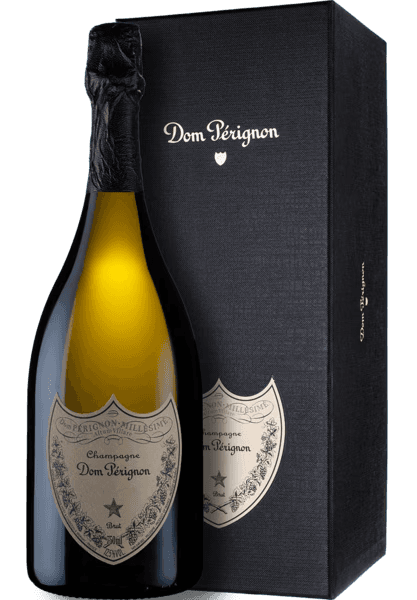
Dom Pérignon Champagne
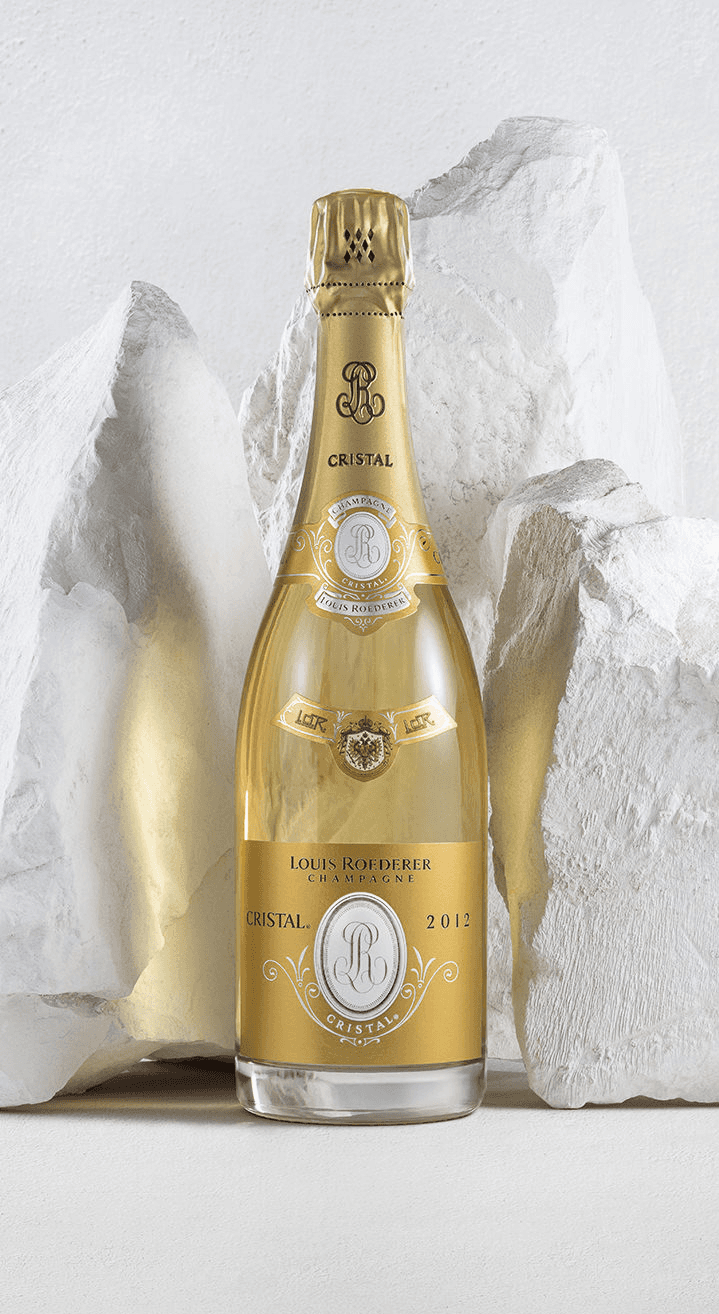
Louis Roederer Cristal Champagne
Non-vintage champagne, due to its large production scale and stable supply, is relatively affordable and is the mainstay of the mass market.
Vintage champagne displays unique flavors depending on the climate conditions of each year. Here are some recognized exceptional years and their characteristics:
1988: Grapes matured slowly, giving the champagne a delicate and complex palate with an elegant texture. Recommended brands include Ruinart Dom Ruinart and Pol Roger Cuvée Sir Winston Churchill.
1996: This year saw excellent grape maturity, producing champagne with a rich palate and balanced acidity and sweetness. Billecart-Salmon Clos Saint Hilaire is a classic choice from this vintage.
2002: Known as the 'perfect vintage', the grapes were balanced in quality, resulting in champagne with an exquisite structure and longevity. Recommended brands include Louis Roederer Cristal and Dom Pérignon.
2008: Cool nights created grapes with excellent acidity, resulting in champagne that is both elegant and powerful. Taittinger Comtes de Champagne is a representative masterpiece from this vintage.
2012: This year's stable climate produced grapes with high maturity and balanced acidity, resulting in champagne with significant aging potential. Dom Pérignon Vintage 2012 is the standout product from this vintage.
2015: Grapes ripened well under hot conditions, resulting in champagne that exhibits rich fruit flavors and an elegant structure. Canard Duchene Champagne Vintage 2015 is praised as 'elegance under heat', making it an outstanding creation.
These exceptional years not only reflect the influence of natural conditions on the art of winemaking but also provide collectors with a basis for selection.
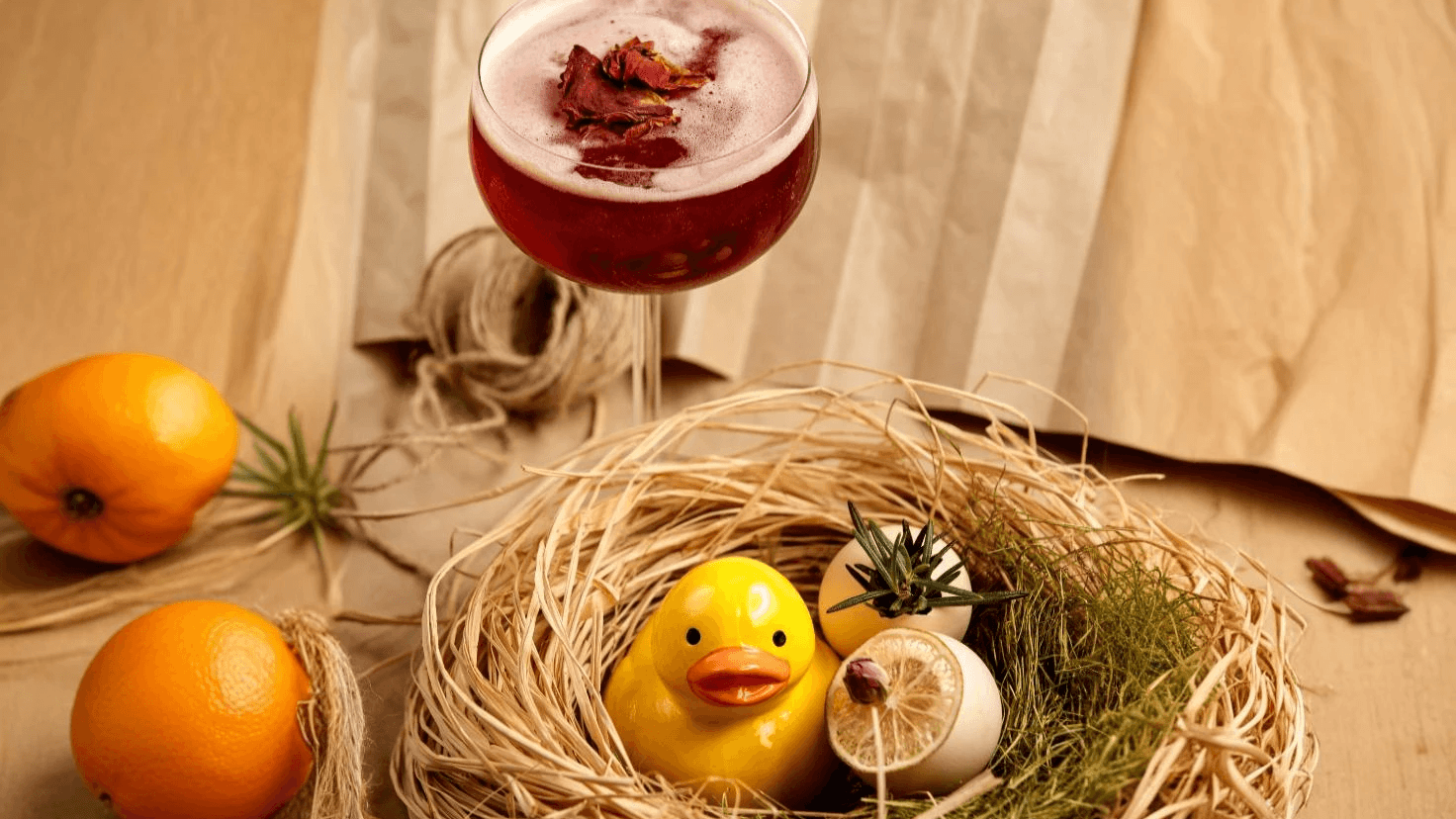
Latest products
The wonderful combination of Easter and fine wine: exploring history, wine selection tips, and wine recommendations.
Easter is a festival filled with hope and new life, and at this special moment, fine wine adds a rich atmosphere to the celebration. This year, Wine Passions has specially launched a limited Easter package, which includes the famous Italian classic wine Amarone della Valpolicella and carefully selected new wines to make your holiday even more perfect. This article will take you through the history of Easter, its connection with wine, recommend suitable wines for Easter, and present our limited package.
Easter originated from Christianity and is an important festival commemorating the suffering and resurrection of Jesus Christ. According to biblical records, Jesus was crucified on Good Friday and rose on the third day, an event that has become the core of Christian faith.
In addition to its religious significance, Easter also incorporates many cultural elements from spring celebrations, such as colored eggs and rabbits, symbolizing new life and fertility. Over time, Easter has become a festival that combines both religious and secular celebrations. This diversity has laid a foundation for the role of wine during Easter.
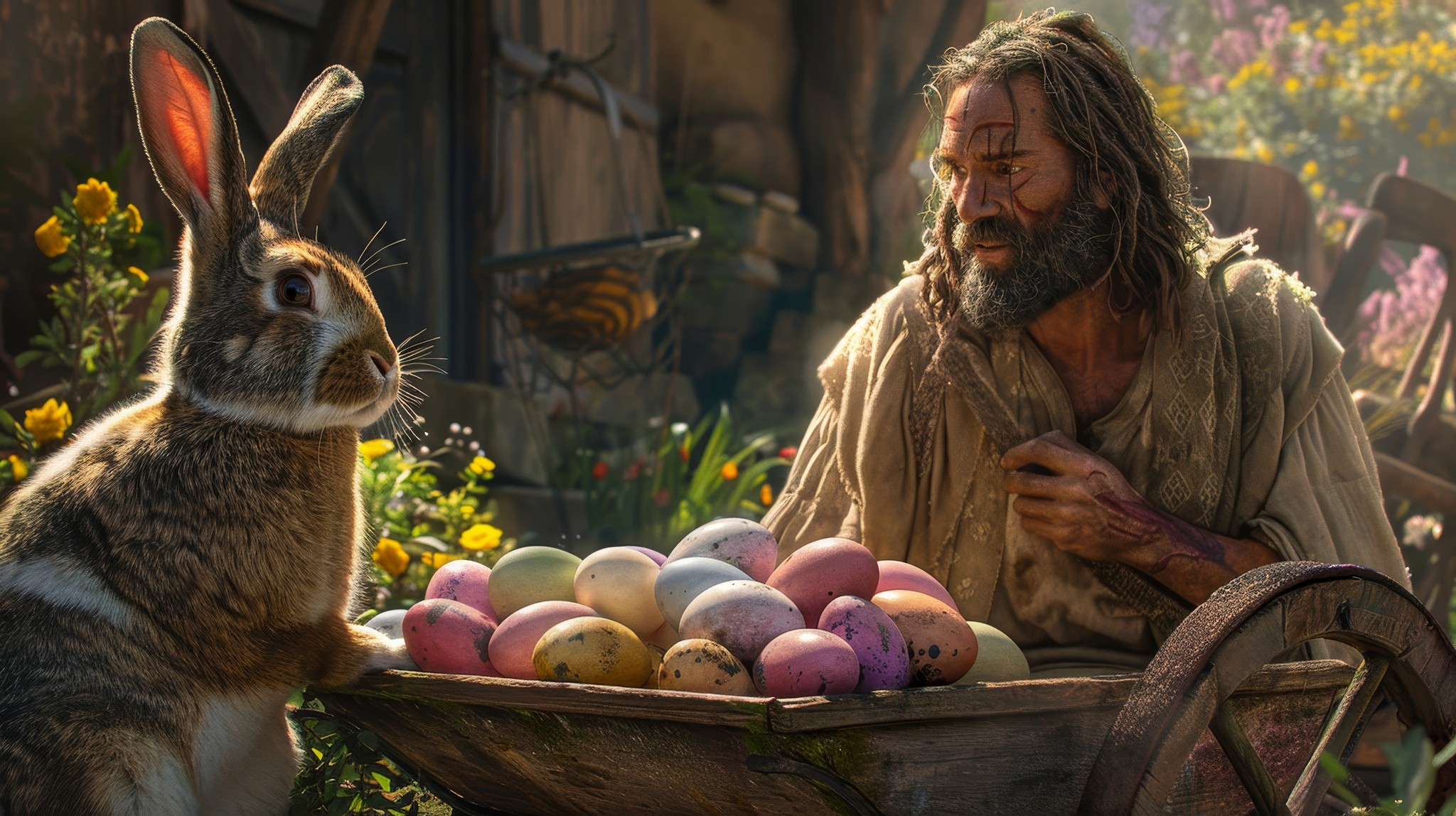
Wine plays an important role in Easter and its related religious rituals. During the Last Supper in Christianity, Jesus used bread and wine to symbolize his body and blood, and this ritual has become an essential part of the Eucharist. Additionally, in Jewish tradition, the blessing rituals during Passover also require the use of wine.
Wine is not only a part of religious rituals but also an important element of family gatherings and friends' celebrations. Especially in a city like Hong Kong, people enjoy using high-quality wines to enhance the atmosphere of gatherings.
Selecting suitable wines for Easter requires consideration of their pairing with traditional dishes. Here are some recommendations:
Gavi: Hailing from the Piedmont region of Italy, it is known for its fresh and bright acidity and delicate palate, making it ideal for pairing with seafood or light salads.
Sauvignon Blanc: With refreshing acidity and herbal flavors, it pairs very well with salads or light snacks.
Pinot Noir: With rich fruit aromas and a light body, it is the perfect choice for main dishes like roasted lamb.
Merlot: Medium-bodied with soft tannins, it can complement richer-flavored dishes.
Amarone della Valpolicella: As one of Italy's classic red wines, Amarone is rich and full-bodied, known for its unique dried fruit aroma and high alcohol content, making it an excellent match for roasted meats or rich sauce dishes.
Moscato: An Italian sweet sparkling wine, known for its intense aroma, sweet fruit flavors, and refreshing acidity, making it an ideal choice for appetizers or dessert moments.
Prosecco: One of Italy's most popular sparkling wines, made from Glera grapes, with rich floral and fruity aromas, including pear, melon, and jasmine. Prosecco is refreshing with a hint of sweetness, making it perfect for pairing with Asian dishes or fruit appetizers.
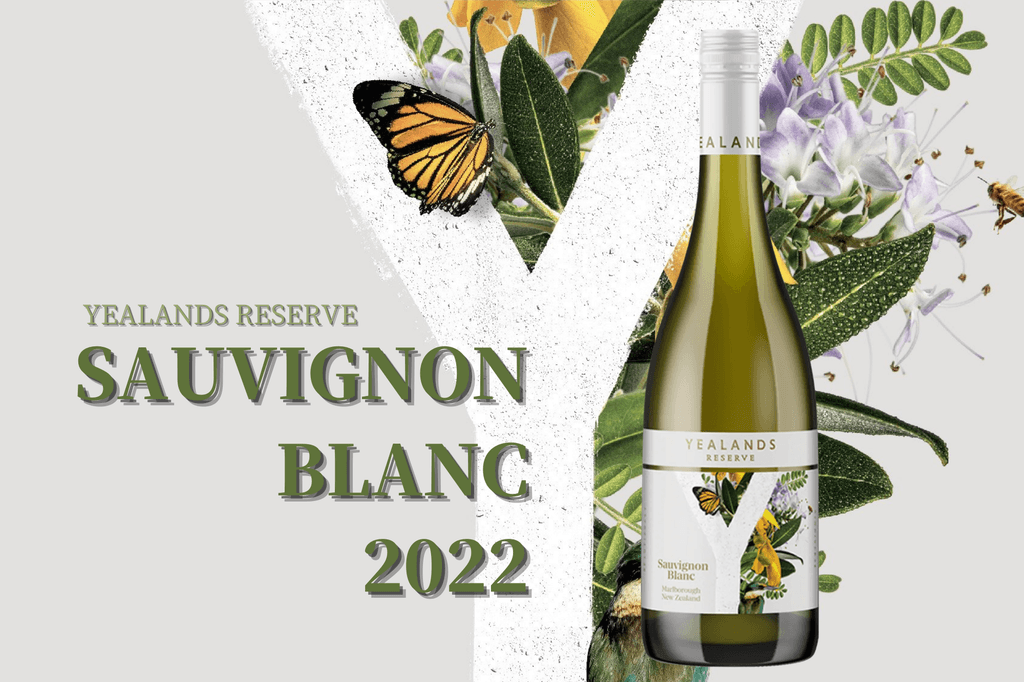
Latest products
A perfect embodiment of craftsmanship and nature: Yealands Reserve Sauvignon Blanc 2022
It is rare for a wine to win accolades in global wine competitions, but Yealands Reserve Sauvignon Blanc 2022 has impressively achieved a stunning score of 97 points at the IWSC due to its exceptional quality and profound tasting experience. It has also been hailed as the "Best Sauvignon Blanc in the World" at the London Wine Competition, undoubtedly securing its place on the must-try list for wine lovers. If you are a wine enthusiast, this wine is definitely worth savoring.
The tasting experience of Yealands Reserve Sauvignon Blanc 2022 is undoubtedly a luxurious feast for the palate, with the following delicate descriptions of its aroma, flavor, and finish:
Before tasting, you are already drawn away by its rich aromas. This Sauvignon Blanc exudes enchanting notes of herb, blackcurrant bud, passion fruit, and guava, while a base of sweet citrus fragrance lingers beneath, as if you are in a radiant summer orchard, with a gentle breeze brushing against your nose, bringing a sense of vibrancy and freshness.
This exquisite wine astonishes on the palate with its complexity, presenting an uplifting burst of citrus fruitiness interwoven with a variety of sweet fruit and herb characteristics. Its texture adds roundness, and the unique minerality in the finish elongates and deepens the overall tasting experience. The finish is pure and profound, leaving a lasting impression.
Tip: Recommended to pair with refreshing seafood or summer salads, the delicacy of the fish beautifully melds with the wine's acidity and smooth sweetness, making the experience anything but "first-class!"
Originating from New Zealand's renowned Yealands Estate, this Sauvignon Blanc hails from the famous Awatere Valley. Particularly, the Seaview vineyard under the estate stands out for its proximity to the ocean. These grapevines benefit from the nourishing ocean spray, infusing the grapes with rich mineral flavors and bestowing the wine with unique terroir charm.
It is also worth mentioning that Yealands is the world's first winery to achieve CarboNZero™ certification since its inception, adhering to sustainable development principles:
Using solar energy, reducing carbon footprint.
Carefully managing the vineyard by introducing Babydoll sheep for natural weeding, creating a perfect blend of nature and winemaking techniques.
These initiatives by Yealands make it more than just a winery; it is a synonym for reverence for nature and a high pursuit of the art of winemaking.
See more

Latest products
The Runaway French Princess: The Legend and Charm of Italian Gavi White Wine
Gavi, a white wine from the Piedmont region of Italy, is known for its long history and romantic legends. It is said that the name Gavi comes from the story of the French princess Gavia. In the late 6th century, the princess chose to elope with her beloved knight to escape the pursuit of her father, King Clodomiro, and found refuge in a small town in Piedmont.

Gavia built a home in the area and established friendly relations with the villagers. She ruled the town for many years, bringing peace and prosperity with her wisdom and leadership. Legend has it that she was buried under a marble altar at the entrance of the castle, where a coat of arms symbolizing the power that once ruled the village is engraved. These coats of arms may pay tribute to this strong princess who shaped the village of Gavi and left behind a romantic and inspiring legacy for future generations. In honor of her courage and kindness, the town was named Gavi, and this land later became the core area for Cortese grape cultivation.
The cultivation history of Cortese grapes in Italy can be traced back to the 17th century and was first recorded at noble banquets in the 18th century. By the mid-20th century, Gavi began to rise to fame as a white wine. In 1974, it received DOC (Denomination of Controlled Origin) certification, and in 1998 it was upgraded to DOCG (Denomination of Controlled Origin and Guarantee) status, becoming one of Italy's first internationally renowned white wines.
What makes Gavi so special lies in its core ingredient—Cortese grapes. These grapes are characterized by their thin skin and high acidity, making them well-suited to grow in the warm and sunny climate of Piedmont. These conditions give Gavi a bone-dry, crisp, and lively flavor, with complex layers of lemon, green apple, honeydew, and almond.

Moreover, Gavi is renowned for its diverse styles, including still white wine, sparkling wine, and classic method sparkling wine. Some high-quality Gavis even have excellent aging potential, developing aromas of honey, nuts, and even petroleum in the bottle. These variations make Gavi not only suitable for everyday drinking but also meet the demand for premium white wines.
It’s also worth mentioning that the soil environment where Gavi grows is diverse, including limestone, mineral-rich alluvial clay, and gravelly soils. Each type of soil imparts different flavor characteristics to the grapes, making every bottle of Gavi unique.
For white wine enthusiasts in Hong Kong, Gavi is undoubtedly an ideal choice, perfectly matching the fresh and crisp palate with Asian culinary culture. Whether paired with seafood, light appetizers, or herbaceous-flavored pasta, Gavi showcases excellent food pairing capabilities.
Additionally, Gavi is reasonably priced but of high quality, with most wines on the market being relatively affordable, making it a cost-effective choice for everyday dining. Coupled with its similarities to renowned white wines such as Chablis or Sauvignon Blanc, those who enjoy fresh white wines are likely to fall in love with it.
Finally, as the Piedmont region is committed to promoting this white wine through events like international wine tastings and masterclasses, more people are becoming aware of Gavi's charm. With 85% of its production exported to international markets, this classic Italian white wine is making its way around the globe.

Latest products
Château Latour: The History and Legend of a Top French Winery
Château Latour is one of the top wineries in the Médoc region of Bordeaux, France. Its name "La Tour" comes from French, meaning "the tower" or "defensive bastion," symbolizing its deep historical background. This winery not only represents French wine culture but also stands as an important witness to the Hundred Years' War and European history. The following will delve into four parts exploring the story of Château Latour, product characteristics, tasting recommendations, and the extraordinary charm of the Latour second label.
The history of Château Latour dates back to 1331, when Gaucelme de Castillon was authorized to build a defensive tower in the parish of Saint-Maubert to protect the Gironde estuary from attacks. This tower later became an important strategic point during the Hundred Years' War and changed hands multiple times between the English and French sides. Its name evolved over time to "La Tour en Saint-Maubert," eventually simplified to "La Tour."
By the 17th century, the Latour estate was inherited by the Alexandre de Ségur family, which later acquired several famous estates including Lafite and Calon-Ségur, becoming one of the most powerful wine families of the time. Alexandre's son Nicolas-Alexandre de Ségur was even praised by King Louis XV as the "King of Wine." In the early 18th century, Latour began to emerge in the British market, with wine prices far exceeding ordinary Bordeaux, gaining great fame.

Marquis Nicolas-Alexandre de Ségur
In the 1855 Bordeaux classification, Château Latour was rated as one of the four first growths, a honor that further solidified its position in the global market.
Château Latour has about 78 hectares of vineyards, with the core 47-hectare parcel known as "L’Enclos"; only grapes from this parcel can be used to produce its flagship product "Grand Vin de Château Latour." This plot is famous for its deep gravel and clay soils, providing a unique microclimate and excellent drainage, elevating the grape quality to its peak.
Main Grape Varieties:
Cabernet Sauvignon: over 70% of the blend, providing structure and aging potential.
Merlot: adds smooth texture and balance.
Cabernet Franc and Petit Verdot: enhance aroma and complexity.
The products of Château Latour are divided into three tiers:
Grand Vin: made from vines with an average age of over 60 years, it is one of the most representative top red wines in Bordeaux.
Les Forts de Latour: the second wine, aimed at the mid-market at a more approachable price.
Pauillac de Château Latour: the third wine, more suitable for everyday drinking.
The red wines of Château Latour are known for their rich aromas of blackcurrant, cedar, and tobacco, exhibiting a strong tannic structure and high aging potential. The Grand Vin from top vintages can be stored for decades or even longer, with its complexity enhancing over time.
Tasting Recommendations:
Optimal Serving Temperature: 16°C to 18°C.
Decanting Time: young vintages are recommended to decant for 2 to 3 hours; older vintages should be decanted gently to preserve delicate flavors.
Food Pairings:
Red meat dishes like steak or lamb chops.
Dishes with rich sauces, such as Bordeaux beef stew.
Hard aged cheeses like Parmesan or Comté.

Latest products
Elegance Under High Temperatures: The Story and Investment Value of Aged Champagne
Champagne, as a representative of sparkling wine, has a history that dates back to the late 17th century in the Champagne region of France. The monk Dom Pierre Pérignon is regarded as one of the founders of champagne production techniques. He dedicated himself to improving wine quality and discovered that blending different grape varieties could create a more balanced wine. With advancements in glass bottle manufacturing and the introduction of corks, bubbles were preserved in the bottle, and champagne gradually became a symbol of the nobility and high society.
In 1810, Veuve Clicquot launched the first vintage champagne, opening a new chapter in the champagne industry. Vintage champagne is only produced in years when grape quality is exceptional, requiring at least three years of bottle aging to enhance its rich, layered flavors. This winemaking method has made vintage champagne a symbol of luxury and quality.

Credit: My French Country Home Magazine
As one of the most famous sparkling wines in the world, champagne is divided into vintage champagne (Vintage Champagne) and non-vintage champagne (Non-Vintage Champagne, NV). These two types have significant differences in production methods, flavor characteristics, rarity, and pricing. The following will detail their differences.
Vintage champagne is made from grapes harvested from a single year and is produced only when the grape quality is exceptional that year, representing the essence of that year’s harvest. According to regulatory requirements, vintage champagne must be aged for at least three years, but many top brands like Krug and Cristal choose to extend aging time to five to ten years to enhance the complexity and depth of the wine.
Non-vintage champagne, on the other hand, is made from a blend of wines from multiple years, aimed at maintaining a stable brand style, ensuring consistent product quality even in years with less than ideal climate conditions. Non-vintage champagne requires only 15 months of aging, with at least 12 months spent maturing on yeast lees.
Due to longer aging times, vintage champagne exhibits richer and more complex flavors, including characteristics of nuts, toasted bread, cream, and honey, while the bubbles are more delicate. Over time, its oxidation brings deeper baked fruit and caramel flavors.
In contrast, non-vintage champagne typically focuses more on fresh fruit flavors such as apple, citrus, and berries, with a refreshing palate and distinct acidity, making it more suitable for everyday drinking or as an aperitif.
Vintage champagne is considered a rare delicacy as it is produced only in specific years and in limited quantities, with prices generally higher than those of non-vintage champagne. For example, some well-known brands such as Dom Pérignon and Louis Roederer Cristal only produce vintage champagne, and their market value continues to grow over time.

Dom Pérignon Champagne

Louis Roederer Cristal Champagne
Non-vintage champagne, due to its large production scale and stable supply, is relatively affordable and is the mainstay of the mass market.
Vintage champagne displays unique flavors depending on the climate conditions of each year. Here are some recognized exceptional years and their characteristics:
1988: Grapes matured slowly, giving the champagne a delicate and complex palate with an elegant texture. Recommended brands include Ruinart Dom Ruinart and Pol Roger Cuvée Sir Winston Churchill.
1996: This year saw excellent grape maturity, producing champagne with a rich palate and balanced acidity and sweetness. Billecart-Salmon Clos Saint Hilaire is a classic choice from this vintage.
2002: Known as the 'perfect vintage', the grapes were balanced in quality, resulting in champagne with an exquisite structure and longevity. Recommended brands include Louis Roederer Cristal and Dom Pérignon.
2008: Cool nights created grapes with excellent acidity, resulting in champagne that is both elegant and powerful. Taittinger Comtes de Champagne is a representative masterpiece from this vintage.
2012: This year's stable climate produced grapes with high maturity and balanced acidity, resulting in champagne with significant aging potential. Dom Pérignon Vintage 2012 is the standout product from this vintage.
2015: Grapes ripened well under hot conditions, resulting in champagne that exhibits rich fruit flavors and an elegant structure. Canard Duchene Champagne Vintage 2015 is praised as 'elegance under heat', making it an outstanding creation.
These exceptional years not only reflect the influence of natural conditions on the art of winemaking but also provide collectors with a basis for selection.

Latest products
The wonderful combination of Easter and fine wine: exploring history, wine selection tips, and wine recommendations.
Easter is a festival filled with hope and new life, and at this special moment, fine wine adds a rich atmosphere to the celebration. This year, Wine Passions has specially launched a limited Easter package, which includes the famous Italian classic wine Amarone della Valpolicella and carefully selected new wines to make your holiday even more perfect. This article will take you through the history of Easter, its connection with wine, recommend suitable wines for Easter, and present our limited package.
Easter originated from Christianity and is an important festival commemorating the suffering and resurrection of Jesus Christ. According to biblical records, Jesus was crucified on Good Friday and rose on the third day, an event that has become the core of Christian faith.
In addition to its religious significance, Easter also incorporates many cultural elements from spring celebrations, such as colored eggs and rabbits, symbolizing new life and fertility. Over time, Easter has become a festival that combines both religious and secular celebrations. This diversity has laid a foundation for the role of wine during Easter.

Wine plays an important role in Easter and its related religious rituals. During the Last Supper in Christianity, Jesus used bread and wine to symbolize his body and blood, and this ritual has become an essential part of the Eucharist. Additionally, in Jewish tradition, the blessing rituals during Passover also require the use of wine.
Wine is not only a part of religious rituals but also an important element of family gatherings and friends' celebrations. Especially in a city like Hong Kong, people enjoy using high-quality wines to enhance the atmosphere of gatherings.
Selecting suitable wines for Easter requires consideration of their pairing with traditional dishes. Here are some recommendations:
Gavi: Hailing from the Piedmont region of Italy, it is known for its fresh and bright acidity and delicate palate, making it ideal for pairing with seafood or light salads.
Sauvignon Blanc: With refreshing acidity and herbal flavors, it pairs very well with salads or light snacks.
Pinot Noir: With rich fruit aromas and a light body, it is the perfect choice for main dishes like roasted lamb.
Merlot: Medium-bodied with soft tannins, it can complement richer-flavored dishes.
Amarone della Valpolicella: As one of Italy's classic red wines, Amarone is rich and full-bodied, known for its unique dried fruit aroma and high alcohol content, making it an excellent match for roasted meats or rich sauce dishes.
Moscato: An Italian sweet sparkling wine, known for its intense aroma, sweet fruit flavors, and refreshing acidity, making it an ideal choice for appetizers or dessert moments.
Prosecco: One of Italy's most popular sparkling wines, made from Glera grapes, with rich floral and fruity aromas, including pear, melon, and jasmine. Prosecco is refreshing with a hint of sweetness, making it perfect for pairing with Asian dishes or fruit appetizers.

Latest products
The Runaway French Princess: The Legend and Charm of Italian Gavi White Wine
Gavi, a white wine from the Piedmont region of Italy, is known for its long history and romantic legends. It is said that the name Gavi comes from the story of the French princess Gavia. In the late 6th century, the princess chose to elope with her beloved knight to escape the pursuit of her father, King Clodomiro, and found refuge in a small town in Piedmont.

Gavia built a home in the area and established friendly relations with the villagers. She ruled the town for many years, bringing peace and prosperity with her wisdom and leadership. Legend has it that she was buried under a marble altar at the entrance of the castle, where a coat of arms symbolizing the power that once ruled the village is engraved. These coats of arms may pay tribute to this strong princess who shaped the village of Gavi and left behind a romantic and inspiring legacy for future generations. In honor of her courage and kindness, the town was named Gavi, and this land later became the core area for Cortese grape cultivation.
The cultivation history of Cortese grapes in Italy can be traced back to the 17th century and was first recorded at noble banquets in the 18th century. By the mid-20th century, Gavi began to rise to fame as a white wine. In 1974, it received DOC (Denomination of Controlled Origin) certification, and in 1998 it was upgraded to DOCG (Denomination of Controlled Origin and Guarantee) status, becoming one of Italy's first internationally renowned white wines.
What makes Gavi so special lies in its core ingredient—Cortese grapes. These grapes are characterized by their thin skin and high acidity, making them well-suited to grow in the warm and sunny climate of Piedmont. These conditions give Gavi a bone-dry, crisp, and lively flavor, with complex layers of lemon, green apple, honeydew, and almond.

Moreover, Gavi is renowned for its diverse styles, including still white wine, sparkling wine, and classic method sparkling wine. Some high-quality Gavis even have excellent aging potential, developing aromas of honey, nuts, and even petroleum in the bottle. These variations make Gavi not only suitable for everyday drinking but also meet the demand for premium white wines.
It’s also worth mentioning that the soil environment where Gavi grows is diverse, including limestone, mineral-rich alluvial clay, and gravelly soils. Each type of soil imparts different flavor characteristics to the grapes, making every bottle of Gavi unique.
For white wine enthusiasts in Hong Kong, Gavi is undoubtedly an ideal choice, perfectly matching the fresh and crisp palate with Asian culinary culture. Whether paired with seafood, light appetizers, or herbaceous-flavored pasta, Gavi showcases excellent food pairing capabilities.
Additionally, Gavi is reasonably priced but of high quality, with most wines on the market being relatively affordable, making it a cost-effective choice for everyday dining. Coupled with its similarities to renowned white wines such as Chablis or Sauvignon Blanc, those who enjoy fresh white wines are likely to fall in love with it.
Finally, as the Piedmont region is committed to promoting this white wine through events like international wine tastings and masterclasses, more people are becoming aware of Gavi's charm. With 85% of its production exported to international markets, this classic Italian white wine is making its way around the globe.

Latest products
Château Latour: The History and Legend of a Top French Winery
Château Latour is one of the top wineries in the Médoc region of Bordeaux, France. Its name "La Tour" comes from French, meaning "the tower" or "defensive bastion," symbolizing its deep historical background. This winery not only represents French wine culture but also stands as an important witness to the Hundred Years' War and European history. The following will delve into four parts exploring the story of Château Latour, product characteristics, tasting recommendations, and the extraordinary charm of the Latour second label.
The history of Château Latour dates back to 1331, when Gaucelme de Castillon was authorized to build a defensive tower in the parish of Saint-Maubert to protect the Gironde estuary from attacks. This tower later became an important strategic point during the Hundred Years' War and changed hands multiple times between the English and French sides. Its name evolved over time to "La Tour en Saint-Maubert," eventually simplified to "La Tour."
By the 17th century, the Latour estate was inherited by the Alexandre de Ségur family, which later acquired several famous estates including Lafite and Calon-Ségur, becoming one of the most powerful wine families of the time. Alexandre's son Nicolas-Alexandre de Ségur was even praised by King Louis XV as the "King of Wine." In the early 18th century, Latour began to emerge in the British market, with wine prices far exceeding ordinary Bordeaux, gaining great fame.

Marquis Nicolas-Alexandre de Ségur
In the 1855 Bordeaux classification, Château Latour was rated as one of the four first growths, a honor that further solidified its position in the global market.
Château Latour has about 78 hectares of vineyards, with the core 47-hectare parcel known as "L’Enclos"; only grapes from this parcel can be used to produce its flagship product "Grand Vin de Château Latour." This plot is famous for its deep gravel and clay soils, providing a unique microclimate and excellent drainage, elevating the grape quality to its peak.
Main Grape Varieties:
Cabernet Sauvignon: over 70% of the blend, providing structure and aging potential.
Merlot: adds smooth texture and balance.
Cabernet Franc and Petit Verdot: enhance aroma and complexity.
The products of Château Latour are divided into three tiers:
Grand Vin: made from vines with an average age of over 60 years, it is one of the most representative top red wines in Bordeaux.
Les Forts de Latour: the second wine, aimed at the mid-market at a more approachable price.
Pauillac de Château Latour: the third wine, more suitable for everyday drinking.
The red wines of Château Latour are known for their rich aromas of blackcurrant, cedar, and tobacco, exhibiting a strong tannic structure and high aging potential. The Grand Vin from top vintages can be stored for decades or even longer, with its complexity enhancing over time.
Tasting Recommendations:
Optimal Serving Temperature: 16°C to 18°C.
Decanting Time: young vintages are recommended to decant for 2 to 3 hours; older vintages should be decanted gently to preserve delicate flavors.
Food Pairings:
Red meat dishes like steak or lamb chops.
Dishes with rich sauces, such as Bordeaux beef stew.
Hard aged cheeses like Parmesan or Comté.

Latest products
Elegance Under High Temperatures: The Story and Investment Value of Aged Champagne
Champagne, as a representative of sparkling wine, has a history that dates back to the late 17th century in the Champagne region of France. The monk Dom Pierre Pérignon is regarded as one of the founders of champagne production techniques. He dedicated himself to improving wine quality and discovered that blending different grape varieties could create a more balanced wine. With advancements in glass bottle manufacturing and the introduction of corks, bubbles were preserved in the bottle, and champagne gradually became a symbol of the nobility and high society.
In 1810, Veuve Clicquot launched the first vintage champagne, opening a new chapter in the champagne industry. Vintage champagne is only produced in years when grape quality is exceptional, requiring at least three years of bottle aging to enhance its rich, layered flavors. This winemaking method has made vintage champagne a symbol of luxury and quality.

Credit: My French Country Home Magazine
As one of the most famous sparkling wines in the world, champagne is divided into vintage champagne (Vintage Champagne) and non-vintage champagne (Non-Vintage Champagne, NV). These two types have significant differences in production methods, flavor characteristics, rarity, and pricing. The following will detail their differences.
Vintage champagne is made from grapes harvested from a single year and is produced only when the grape quality is exceptional that year, representing the essence of that year’s harvest. According to regulatory requirements, vintage champagne must be aged for at least three years, but many top brands like Krug and Cristal choose to extend aging time to five to ten years to enhance the complexity and depth of the wine.
Non-vintage champagne, on the other hand, is made from a blend of wines from multiple years, aimed at maintaining a stable brand style, ensuring consistent product quality even in years with less than ideal climate conditions. Non-vintage champagne requires only 15 months of aging, with at least 12 months spent maturing on yeast lees.
Due to longer aging times, vintage champagne exhibits richer and more complex flavors, including characteristics of nuts, toasted bread, cream, and honey, while the bubbles are more delicate. Over time, its oxidation brings deeper baked fruit and caramel flavors.
In contrast, non-vintage champagne typically focuses more on fresh fruit flavors such as apple, citrus, and berries, with a refreshing palate and distinct acidity, making it more suitable for everyday drinking or as an aperitif.
Vintage champagne is considered a rare delicacy as it is produced only in specific years and in limited quantities, with prices generally higher than those of non-vintage champagne. For example, some well-known brands such as Dom Pérignon and Louis Roederer Cristal only produce vintage champagne, and their market value continues to grow over time.

Dom Pérignon Champagne

Louis Roederer Cristal Champagne
Non-vintage champagne, due to its large production scale and stable supply, is relatively affordable and is the mainstay of the mass market.
Vintage champagne displays unique flavors depending on the climate conditions of each year. Here are some recognized exceptional years and their characteristics:
1988: Grapes matured slowly, giving the champagne a delicate and complex palate with an elegant texture. Recommended brands include Ruinart Dom Ruinart and Pol Roger Cuvée Sir Winston Churchill.
1996: This year saw excellent grape maturity, producing champagne with a rich palate and balanced acidity and sweetness. Billecart-Salmon Clos Saint Hilaire is a classic choice from this vintage.
2002: Known as the 'perfect vintage', the grapes were balanced in quality, resulting in champagne with an exquisite structure and longevity. Recommended brands include Louis Roederer Cristal and Dom Pérignon.
2008: Cool nights created grapes with excellent acidity, resulting in champagne that is both elegant and powerful. Taittinger Comtes de Champagne is a representative masterpiece from this vintage.
2012: This year's stable climate produced grapes with high maturity and balanced acidity, resulting in champagne with significant aging potential. Dom Pérignon Vintage 2012 is the standout product from this vintage.
2015: Grapes ripened well under hot conditions, resulting in champagne that exhibits rich fruit flavors and an elegant structure. Canard Duchene Champagne Vintage 2015 is praised as 'elegance under heat', making it an outstanding creation.
These exceptional years not only reflect the influence of natural conditions on the art of winemaking but also provide collectors with a basis for selection.

Latest products
The Runaway French Princess: The Legend and Charm of Italian Gavi White Wine
Gavi, a white wine from the Piedmont region of Italy, is known for its long history and romantic legends. It is said that the name Gavi comes from the story of the French princess Gavia. In the late 6th century, the princess chose to elope with her beloved knight to escape the pursuit of her father, King Clodomiro, and found refuge in a small town in Piedmont.

Gavia built a home in the area and established friendly relations with the villagers. She ruled the town for many years, bringing peace and prosperity with her wisdom and leadership. Legend has it that she was buried under a marble altar at the entrance of the castle, where a coat of arms symbolizing the power that once ruled the village is engraved. These coats of arms may pay tribute to this strong princess who shaped the village of Gavi and left behind a romantic and inspiring legacy for future generations. In honor of her courage and kindness, the town was named Gavi, and this land later became the core area for Cortese grape cultivation.
The cultivation history of Cortese grapes in Italy can be traced back to the 17th century and was first recorded at noble banquets in the 18th century. By the mid-20th century, Gavi began to rise to fame as a white wine. In 1974, it received DOC (Denomination of Controlled Origin) certification, and in 1998 it was upgraded to DOCG (Denomination of Controlled Origin and Guarantee) status, becoming one of Italy's first internationally renowned white wines.
What makes Gavi so special lies in its core ingredient—Cortese grapes. These grapes are characterized by their thin skin and high acidity, making them well-suited to grow in the warm and sunny climate of Piedmont. These conditions give Gavi a bone-dry, crisp, and lively flavor, with complex layers of lemon, green apple, honeydew, and almond.

Moreover, Gavi is renowned for its diverse styles, including still white wine, sparkling wine, and classic method sparkling wine. Some high-quality Gavis even have excellent aging potential, developing aromas of honey, nuts, and even petroleum in the bottle. These variations make Gavi not only suitable for everyday drinking but also meet the demand for premium white wines.
It’s also worth mentioning that the soil environment where Gavi grows is diverse, including limestone, mineral-rich alluvial clay, and gravelly soils. Each type of soil imparts different flavor characteristics to the grapes, making every bottle of Gavi unique.
For white wine enthusiasts in Hong Kong, Gavi is undoubtedly an ideal choice, perfectly matching the fresh and crisp palate with Asian culinary culture. Whether paired with seafood, light appetizers, or herbaceous-flavored pasta, Gavi showcases excellent food pairing capabilities.
Additionally, Gavi is reasonably priced but of high quality, with most wines on the market being relatively affordable, making it a cost-effective choice for everyday dining. Coupled with its similarities to renowned white wines such as Chablis or Sauvignon Blanc, those who enjoy fresh white wines are likely to fall in love with it.
Finally, as the Piedmont region is committed to promoting this white wine through events like international wine tastings and masterclasses, more people are becoming aware of Gavi's charm. With 85% of its production exported to international markets, this classic Italian white wine is making its way around the globe.

Latest products
Château Latour: The History and Legend of a Top French Winery
Château Latour is one of the top wineries in the Médoc region of Bordeaux, France. Its name "La Tour" comes from French, meaning "the tower" or "defensive bastion," symbolizing its deep historical background. This winery not only represents French wine culture but also stands as an important witness to the Hundred Years' War and European history. The following will delve into four parts exploring the story of Château Latour, product characteristics, tasting recommendations, and the extraordinary charm of the Latour second label.
The history of Château Latour dates back to 1331, when Gaucelme de Castillon was authorized to build a defensive tower in the parish of Saint-Maubert to protect the Gironde estuary from attacks. This tower later became an important strategic point during the Hundred Years' War and changed hands multiple times between the English and French sides. Its name evolved over time to "La Tour en Saint-Maubert," eventually simplified to "La Tour."
By the 17th century, the Latour estate was inherited by the Alexandre de Ségur family, which later acquired several famous estates including Lafite and Calon-Ségur, becoming one of the most powerful wine families of the time. Alexandre's son Nicolas-Alexandre de Ségur was even praised by King Louis XV as the "King of Wine." In the early 18th century, Latour began to emerge in the British market, with wine prices far exceeding ordinary Bordeaux, gaining great fame.

Marquis Nicolas-Alexandre de Ségur
In the 1855 Bordeaux classification, Château Latour was rated as one of the four first growths, a honor that further solidified its position in the global market.
Château Latour has about 78 hectares of vineyards, with the core 47-hectare parcel known as "L’Enclos"; only grapes from this parcel can be used to produce its flagship product "Grand Vin de Château Latour." This plot is famous for its deep gravel and clay soils, providing a unique microclimate and excellent drainage, elevating the grape quality to its peak.
Main Grape Varieties:
Cabernet Sauvignon: over 70% of the blend, providing structure and aging potential.
Merlot: adds smooth texture and balance.
Cabernet Franc and Petit Verdot: enhance aroma and complexity.
The products of Château Latour are divided into three tiers:
Grand Vin: made from vines with an average age of over 60 years, it is one of the most representative top red wines in Bordeaux.
Les Forts de Latour: the second wine, aimed at the mid-market at a more approachable price.
Pauillac de Château Latour: the third wine, more suitable for everyday drinking.
The red wines of Château Latour are known for their rich aromas of blackcurrant, cedar, and tobacco, exhibiting a strong tannic structure and high aging potential. The Grand Vin from top vintages can be stored for decades or even longer, with its complexity enhancing over time.
Tasting Recommendations:
Optimal Serving Temperature: 16°C to 18°C.
Decanting Time: young vintages are recommended to decant for 2 to 3 hours; older vintages should be decanted gently to preserve delicate flavors.
Food Pairings:
Red meat dishes like steak or lamb chops.
Dishes with rich sauces, such as Bordeaux beef stew.
Hard aged cheeses like Parmesan or Comté.

Latest products
Elegance Under High Temperatures: The Story and Investment Value of Aged Champagne
Champagne, as a representative of sparkling wine, has a history that dates back to the late 17th century in the Champagne region of France. The monk Dom Pierre Pérignon is regarded as one of the founders of champagne production techniques. He dedicated himself to improving wine quality and discovered that blending different grape varieties could create a more balanced wine. With advancements in glass bottle manufacturing and the introduction of corks, bubbles were preserved in the bottle, and champagne gradually became a symbol of the nobility and high society.
In 1810, Veuve Clicquot launched the first vintage champagne, opening a new chapter in the champagne industry. Vintage champagne is only produced in years when grape quality is exceptional, requiring at least three years of bottle aging to enhance its rich, layered flavors. This winemaking method has made vintage champagne a symbol of luxury and quality.

Credit: My French Country Home Magazine
As one of the most famous sparkling wines in the world, champagne is divided into vintage champagne (Vintage Champagne) and non-vintage champagne (Non-Vintage Champagne, NV). These two types have significant differences in production methods, flavor characteristics, rarity, and pricing. The following will detail their differences.
Vintage champagne is made from grapes harvested from a single year and is produced only when the grape quality is exceptional that year, representing the essence of that year’s harvest. According to regulatory requirements, vintage champagne must be aged for at least three years, but many top brands like Krug and Cristal choose to extend aging time to five to ten years to enhance the complexity and depth of the wine.
Non-vintage champagne, on the other hand, is made from a blend of wines from multiple years, aimed at maintaining a stable brand style, ensuring consistent product quality even in years with less than ideal climate conditions. Non-vintage champagne requires only 15 months of aging, with at least 12 months spent maturing on yeast lees.
Due to longer aging times, vintage champagne exhibits richer and more complex flavors, including characteristics of nuts, toasted bread, cream, and honey, while the bubbles are more delicate. Over time, its oxidation brings deeper baked fruit and caramel flavors.
In contrast, non-vintage champagne typically focuses more on fresh fruit flavors such as apple, citrus, and berries, with a refreshing palate and distinct acidity, making it more suitable for everyday drinking or as an aperitif.
Vintage champagne is considered a rare delicacy as it is produced only in specific years and in limited quantities, with prices generally higher than those of non-vintage champagne. For example, some well-known brands such as Dom Pérignon and Louis Roederer Cristal only produce vintage champagne, and their market value continues to grow over time.

Dom Pérignon Champagne

Louis Roederer Cristal Champagne
Non-vintage champagne, due to its large production scale and stable supply, is relatively affordable and is the mainstay of the mass market.
Vintage champagne displays unique flavors depending on the climate conditions of each year. Here are some recognized exceptional years and their characteristics:
1988: Grapes matured slowly, giving the champagne a delicate and complex palate with an elegant texture. Recommended brands include Ruinart Dom Ruinart and Pol Roger Cuvée Sir Winston Churchill.
1996: This year saw excellent grape maturity, producing champagne with a rich palate and balanced acidity and sweetness. Billecart-Salmon Clos Saint Hilaire is a classic choice from this vintage.
2002: Known as the 'perfect vintage', the grapes were balanced in quality, resulting in champagne with an exquisite structure and longevity. Recommended brands include Louis Roederer Cristal and Dom Pérignon.
2008: Cool nights created grapes with excellent acidity, resulting in champagne that is both elegant and powerful. Taittinger Comtes de Champagne is a representative masterpiece from this vintage.
2012: This year's stable climate produced grapes with high maturity and balanced acidity, resulting in champagne with significant aging potential. Dom Pérignon Vintage 2012 is the standout product from this vintage.
2015: Grapes ripened well under hot conditions, resulting in champagne that exhibits rich fruit flavors and an elegant structure. Canard Duchene Champagne Vintage 2015 is praised as 'elegance under heat', making it an outstanding creation.
These exceptional years not only reflect the influence of natural conditions on the art of winemaking but also provide collectors with a basis for selection.

Latest products
The wonderful combination of Easter and fine wine: exploring history, wine selection tips, and wine recommendations.
Easter is a festival filled with hope and new life, and at this special moment, fine wine adds a rich atmosphere to the celebration. This year, Wine Passions has specially launched a limited Easter package, which includes the famous Italian classic wine Amarone della Valpolicella and carefully selected new wines to make your holiday even more perfect. This article will take you through the history of Easter, its connection with wine, recommend suitable wines for Easter, and present our limited package.
Easter originated from Christianity and is an important festival commemorating the suffering and resurrection of Jesus Christ. According to biblical records, Jesus was crucified on Good Friday and rose on the third day, an event that has become the core of Christian faith.
In addition to its religious significance, Easter also incorporates many cultural elements from spring celebrations, such as colored eggs and rabbits, symbolizing new life and fertility. Over time, Easter has become a festival that combines both religious and secular celebrations. This diversity has laid a foundation for the role of wine during Easter.

Wine plays an important role in Easter and its related religious rituals. During the Last Supper in Christianity, Jesus used bread and wine to symbolize his body and blood, and this ritual has become an essential part of the Eucharist. Additionally, in Jewish tradition, the blessing rituals during Passover also require the use of wine.
Wine is not only a part of religious rituals but also an important element of family gatherings and friends' celebrations. Especially in a city like Hong Kong, people enjoy using high-quality wines to enhance the atmosphere of gatherings.
Selecting suitable wines for Easter requires consideration of their pairing with traditional dishes. Here are some recommendations:
Gavi: Hailing from the Piedmont region of Italy, it is known for its fresh and bright acidity and delicate palate, making it ideal for pairing with seafood or light salads.
Sauvignon Blanc: With refreshing acidity and herbal flavors, it pairs very well with salads or light snacks.
Pinot Noir: With rich fruit aromas and a light body, it is the perfect choice for main dishes like roasted lamb.
Merlot: Medium-bodied with soft tannins, it can complement richer-flavored dishes.
Amarone della Valpolicella: As one of Italy's classic red wines, Amarone is rich and full-bodied, known for its unique dried fruit aroma and high alcohol content, making it an excellent match for roasted meats or rich sauce dishes.
Moscato: An Italian sweet sparkling wine, known for its intense aroma, sweet fruit flavors, and refreshing acidity, making it an ideal choice for appetizers or dessert moments.
Prosecco: One of Italy's most popular sparkling wines, made from Glera grapes, with rich floral and fruity aromas, including pear, melon, and jasmine. Prosecco is refreshing with a hint of sweetness, making it perfect for pairing with Asian dishes or fruit appetizers.

Latest products
A perfect embodiment of craftsmanship and nature: Yealands Reserve Sauvignon Blanc 2022
It is rare for a wine to win accolades in global wine competitions, but Yealands Reserve Sauvignon Blanc 2022 has impressively achieved a stunning score of 97 points at the IWSC due to its exceptional quality and profound tasting experience. It has also been hailed as the "Best Sauvignon Blanc in the World" at the London Wine Competition, undoubtedly securing its place on the must-try list for wine lovers. If you are a wine enthusiast, this wine is definitely worth savoring.
The tasting experience of Yealands Reserve Sauvignon Blanc 2022 is undoubtedly a luxurious feast for the palate, with the following delicate descriptions of its aroma, flavor, and finish:
Before tasting, you are already drawn away by its rich aromas. This Sauvignon Blanc exudes enchanting notes of herb, blackcurrant bud, passion fruit, and guava, while a base of sweet citrus fragrance lingers beneath, as if you are in a radiant summer orchard, with a gentle breeze brushing against your nose, bringing a sense of vibrancy and freshness.
This exquisite wine astonishes on the palate with its complexity, presenting an uplifting burst of citrus fruitiness interwoven with a variety of sweet fruit and herb characteristics. Its texture adds roundness, and the unique minerality in the finish elongates and deepens the overall tasting experience. The finish is pure and profound, leaving a lasting impression.
Tip: Recommended to pair with refreshing seafood or summer salads, the delicacy of the fish beautifully melds with the wine's acidity and smooth sweetness, making the experience anything but "first-class!"
Originating from New Zealand's renowned Yealands Estate, this Sauvignon Blanc hails from the famous Awatere Valley. Particularly, the Seaview vineyard under the estate stands out for its proximity to the ocean. These grapevines benefit from the nourishing ocean spray, infusing the grapes with rich mineral flavors and bestowing the wine with unique terroir charm.
It is also worth mentioning that Yealands is the world's first winery to achieve CarboNZero™ certification since its inception, adhering to sustainable development principles:
Using solar energy, reducing carbon footprint.
Carefully managing the vineyard by introducing Babydoll sheep for natural weeding, creating a perfect blend of nature and winemaking techniques.
These initiatives by Yealands make it more than just a winery; it is a synonym for reverence for nature and a high pursuit of the art of winemaking.
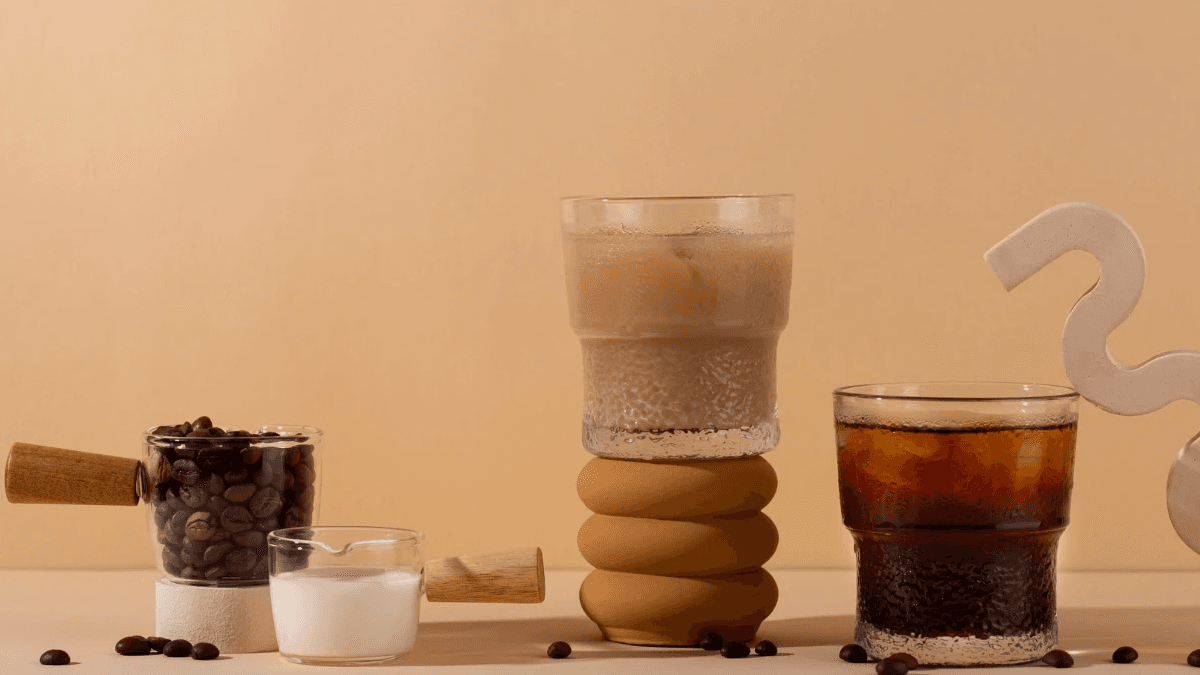


Feature report
Feature report
Feature report
Feature report
The revolution of cocktail menus in Hong Kong tea restaurants: creative cocktails paired with Hong Kong-style milk tea.
The revolution of cocktail menus in Hong Kong tea restaurants: creative cocktails paired with Hong Kong-style milk tea.
The revolution of cocktail menus in Hong Kong tea restaurants: creative cocktails paired with Hong Kong-style milk tea.
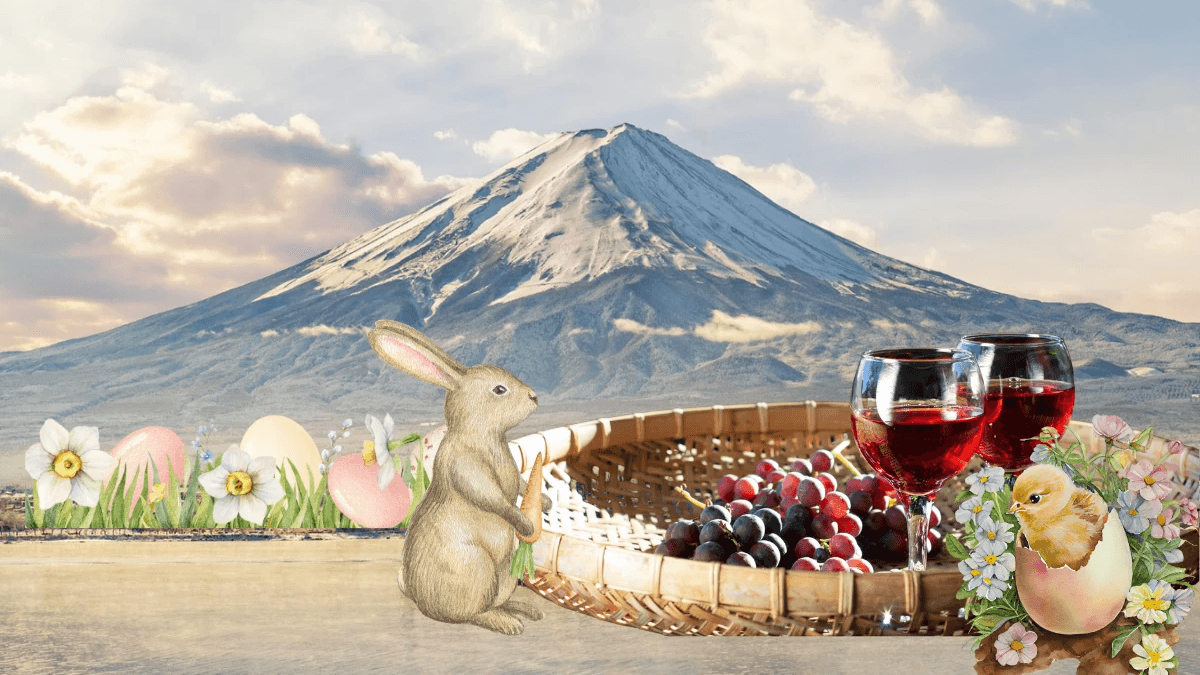


Feature report
Feature report
Feature report
Feature report
Easter Spring Wine Tasting Tour: Explore the Wine Region of Yamanashi Prefecture, Japan
Easter Spring Wine Tasting Tour: Explore the Wine Region of Yamanashi Prefecture, Japan
Easter Spring Wine Tasting Tour: Explore the Wine Region of Yamanashi Prefecture, Japan
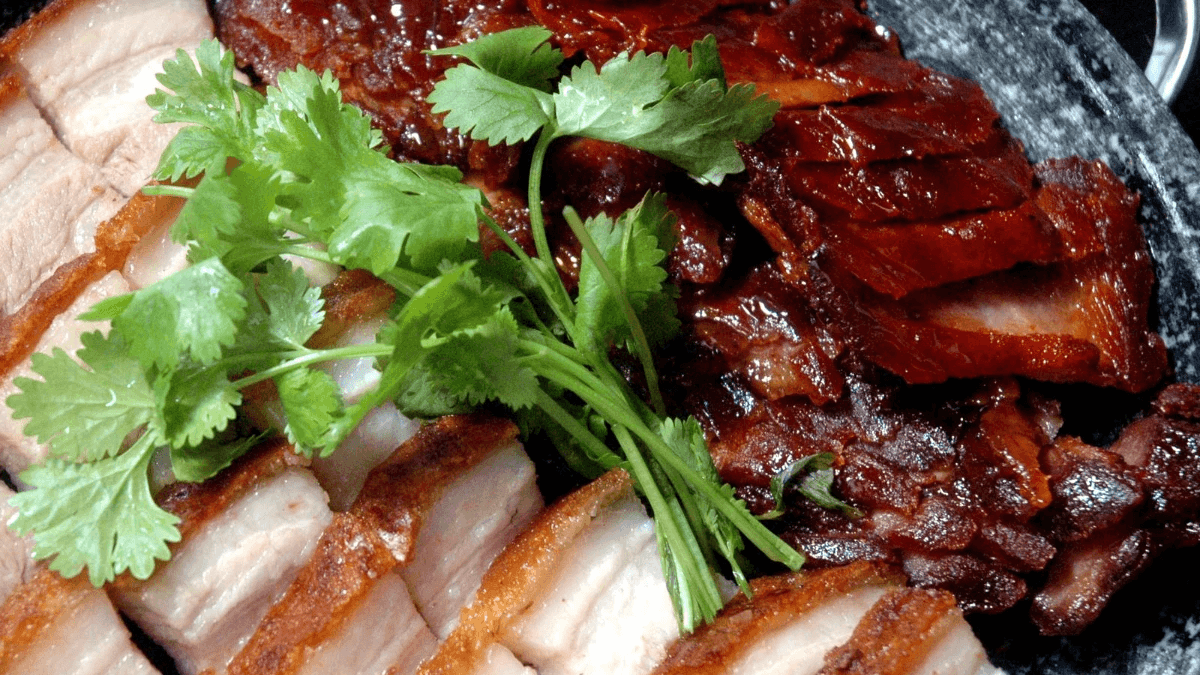
Feature report
The perfect encounter of wine and Hong Kong-style roasted meats: an unexpected delicious combination.
In this culinary paradise of Hong Kong, traditional Cantonese roasted meats have always been an indispensable part of the local dining culture. This article will take you on a journey to explore the wonderful pairing of wine with Cantonese roasted meats, revealing the latest trends in red wine and food pairing, as well as how this innovative combination reflects the current wine trends.
In this culinary paradise of Hong Kong, Cantonese roasted meats have been the soul of the local dining culture, from the fragrant char siu to the crispy-skinned roasted goose, these classic flavors accompany countless individuals in their daily meals. However, with the growing popularity of wine culture, an exciting question arises: how can these seemingly unrelated gastronomic elements be perfectly combined? As an authoritative website that shares wine pairing tips, we will guide you in discovering the stunning pairings of wine with Cantonese roasted meats, seeing how to breathe new life into roasted meats; whether you are a wine lover or a roasted meat enthusiast, this article will open up a dual adventure of taste and culture for you.
The food culture in Hong Kong is never short of surprises. According to data from the Hong Kong Tourism Board's 2023 report, locals consume an average of over 20 kilograms of roasted meats each year, highlighting their significant place in the local dining scene (Hong Kong Tourism Board Food Report 2023). At the same time, the popularity of wine in Hong Kong is rising rapidly, with the total import value of wine reaching $1.2 billion in 2024, a 15% increase compared to the previous year (Hong Kong Wine Import Statistics). This trend has given rise to an interesting question: how can wine and Cantonese roasted meats—two completely different gastronomic delights—be combined?
The answer lies in their complementarity. Cantonese roasted meats are known for their rich fats, the intertwining flavors of sweet and salty, and their multi-layered textures, while wine, especially red wine, can neutralize the greasiness of roasted meats with its tannins and fruity aromas, while enhancing their deliciousness. For instance, the richness of roasted goose complements the structure of Bordeaux blends, while the sweetness of char siu beautifully echoes the soft fruitiness of Pinot Noir. This pairing is a microcosm of the blending of Eastern and Western food cultures, reflecting the unique charm of Hong Kong as a culinary melting pot.
Global food trends are also driving this innovation. According to a report by Wine Enthusiast in 2024, the Asian market is increasingly focusing on localized wine pairings, as consumers desire to incorporate wine into their daily meals rather than limiting it to Western occasions (Wine Enthusiast Asia Trends 2024). In Hong Kong, this means that wine is no longer just the preserve of steak dinners but can dance alongside the classic flavors of roasted meat shops.
Want to know how to pair wine perfectly with Cantonese roasted meats? We have conducted in-depth research into the flavor characteristics of roasted meats and combined them with the principles of red wine and food pairing to recommend the following classic combinations, so you can easily experiment at home or in restaurants:
Palate: Medium acidity, soft tannins, with flavors of blackberry and spice.
Price: Around HK$400-450
Pairing Reason: The rich fat of roasted goose, with its crispy skin and tender meat, is balanced by the Cabernet Sauvignon and Merlot in Bordeaux blends, which can neutralize greasiness and enhance the fresh deliciousness of the meat through the constraining effect of tannins.
Real Example: The Hong Kong restaurant "Yat Gor Roasted Goose" offers classic roasted goose, pairing this wine allows you to experience the balance of oiliness and fruitiness.
Char Siu x Pinot Noir
Palate: Light fruity aromas, with flavors of cherry and raspberry, and smooth tannins.
Price: Around HK$300-350
Pairing Reason: The honey sweetness and slightly charred aroma of char siu complement the elegant fruit flavors of Pinot Noir, the light body does not overpower, allowing the flavors of char siu to become more pronounced.
Real Example: Order a portion of honey-glazed char siu at "Tai Wong Wah Restaurant", pairing it with this wine creates a sweet yet not cloying experience that leaves a lasting impression.
Roast Pork x Shiraz/Syrah
Palate: Intense dark fruit aromas, with pepper and smoky notes, full-bodied.
Price: Around HK$250-300
Pairing Reason: The salty aroma and fatty texture of roast pork contrast with the spiciness and fruitiness of Shiraz, and the rich tannins can cut through greasiness, making every bite full of layers.
Real Example: Try roast pork at "Hing Kee Roasted Meat", pairing it with this wine creates an amazing collision of salty and peppery flavors.
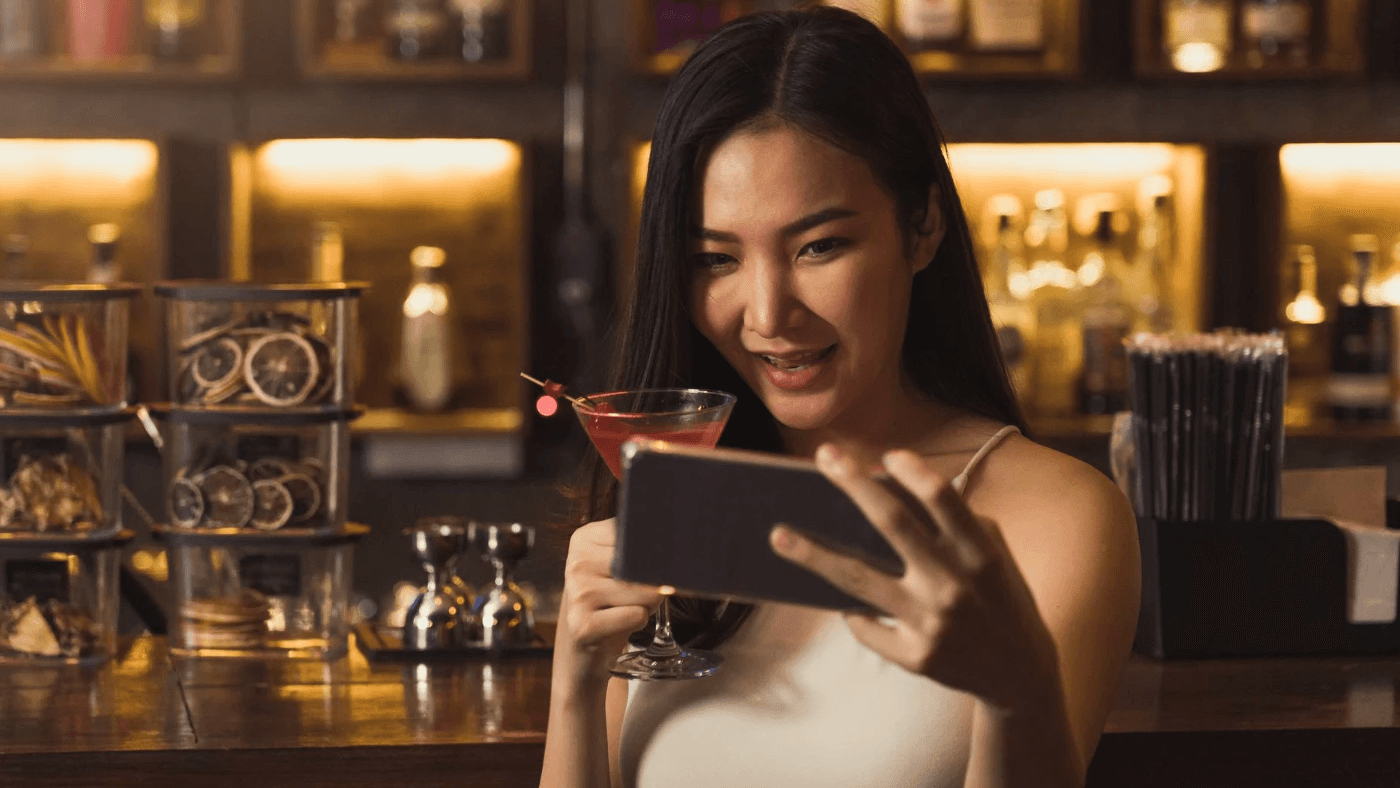
Feature report
A person can truly enjoy: Exploring top cocktail bars (a collection of bars with different styles)
The nightlife in Hong Kong is famous for its diversity and vibrancy, particularly cocktail bars, which attract wine lovers from around the world who are active in different nightlife scenes. Bars are not only social venues but have also become a small haven for many travelers who enjoy exploring alone and local Hong Kong residents looking to relax.
The demand for going to bars alone is growing, especially among young people seeking personal space and social opportunities. According to 2023 data from Statista, about 28% of Asian travelers plan to travel solo, reflecting the increasing trend of solitary activities. As solo trips and the option of visiting bars alone become more popular, especially for busy urbanites, it is a way to unwind and engage in self-exploration. Going to a bar alone provides a quiet space away from daily pressures to enjoy personal time; at the same time, it also offers an opportunity to casually interact with strangers, such as chatting with bartenders and learning more about cocktails.
To understand Hong Kong's cocktail bars, one must first look back at the origins of cocktails. Cocktails can be traced back to the early 19th century in the United States, originally a mixed drink containing spirits, sugar, water, and bitters. The Prohibition era (1920-1933) is considered the golden age of cocktails, with the rise of speakeasies leading to many classic cocktail recipes, such as Martini and Negroni.
The cocktail culture in Hong Kong is deeply influenced by its colonial history and international port status. In 1928, The Peninsula Hong Kong opened, and its bar became one of the first places to offer cocktails. Subsequently, in the 1980s and 90s, the surge of bars in Lan Kwai Fong and Soho laid the foundation for Hong Kong's cocktail culture.
In recent years, Hong Kong's bartenders have been innovating, driving the popularity of craft cocktails, attracting drinkers from around the globe. According to the 2024 Hong Kong Nightlife Industry Report, the bar industry has an annual revenue of HKD 5 billion, with cocktail bars accounting for 20% of the market share, reflecting their economic impact.
Although fewer bars are found in the New Territories, they provide a peaceful environment suitable for solo visits.
Address: 1 Anping Street, Sha Tin, Hong Kong, Level 30, Courtyard by Marriott Sha Tin
Business Hours:
Monday to Thursday 12:00 - 23:30
Friday 12:00 - 01:00
Saturday 15:30 - 01:00
Sunday 15:30 - 23:30
Public Holidays 15:30 - 23:30
Public Holiday Eves 12:00 - 01:00
Recommended Drinks: Front Runner, American Pharaoh
Recommendation Reason: LEVELthirty Rooftop Lounge, located on the 30th floor of Courtyard by Marriott Sha Tin, is a top-floor bar combining stunning views with a high-quality dining experience. The lounge features comfortable indoor seating and an outdoor terrace overlooking the beautiful scenery of Sha Tin Racecourse, Tolo Harbour, and Castle Peak River, particularly enchanting at sunset or under the twinkling night lights. The restaurant offers a variety of creative cocktails, champagne, and both Western and Chinese delicacies, such as Canadian roasted pork rack and seafood pasta with cream sauce, making it a perfect choice for dining or casual sipping.
Is reservation needed: Reservations are recommended on weekends.
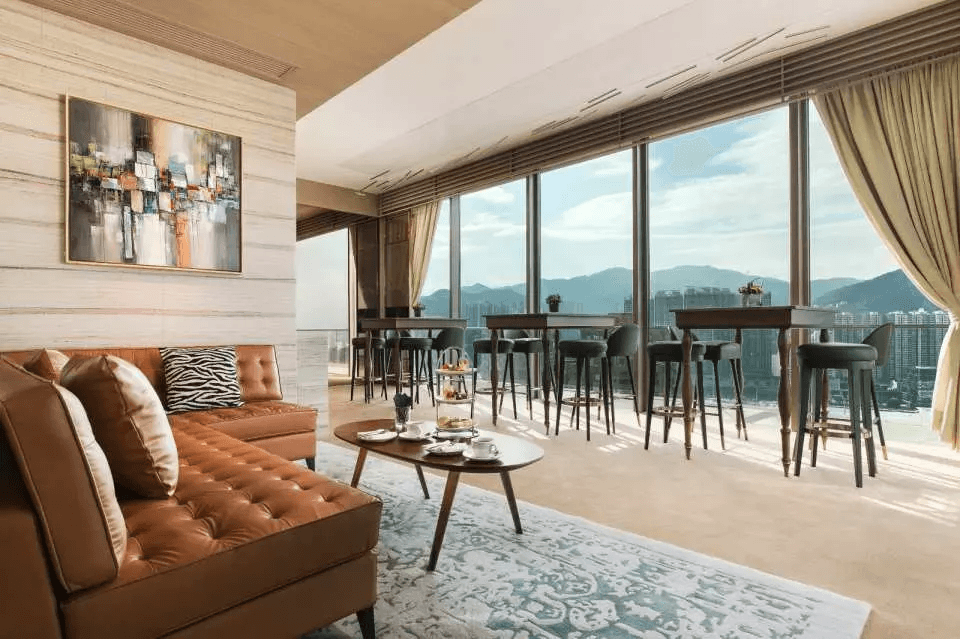
Address: Shop 1, Ground Floor, 18 Tai Chung Road, Tsuen Wan
Business Hours: Monday to Sunday 16:00 PM - 03:00 AM (Bar service typically starts in the afternoon)
Recommended Drinks: Song, Tea Tale
Recommendation Reason: COMO bar, located near the Nan Fung cotton mill in Tsuen Wan, is a bar restaurant that combines stylish decor with high-quality Western cuisine. The interior is dominated by black, white, and gray tones, with a spacious design and high ceilings, offering sofa seating, elevated seating, and bar seating, creating an atmosphere that blends culture and fashion. The menu is regularly updated, featuring high-quality dishes such as Spanish Iberico pork loin, paired with creative drinks, making it a great place to relax and enjoy gourmet food.
Is reservation needed: Typically no reservation is needed.
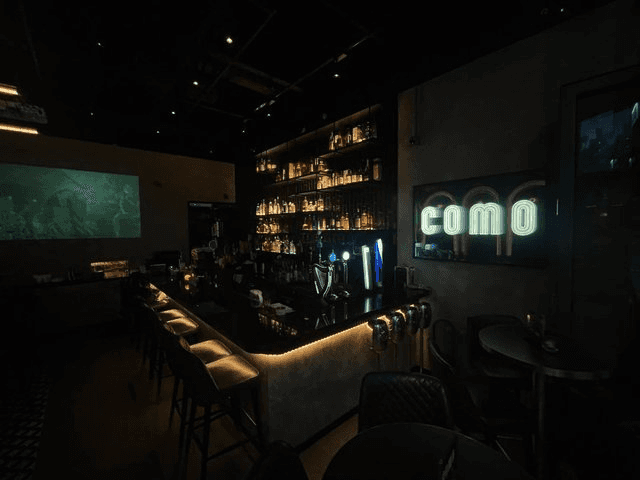
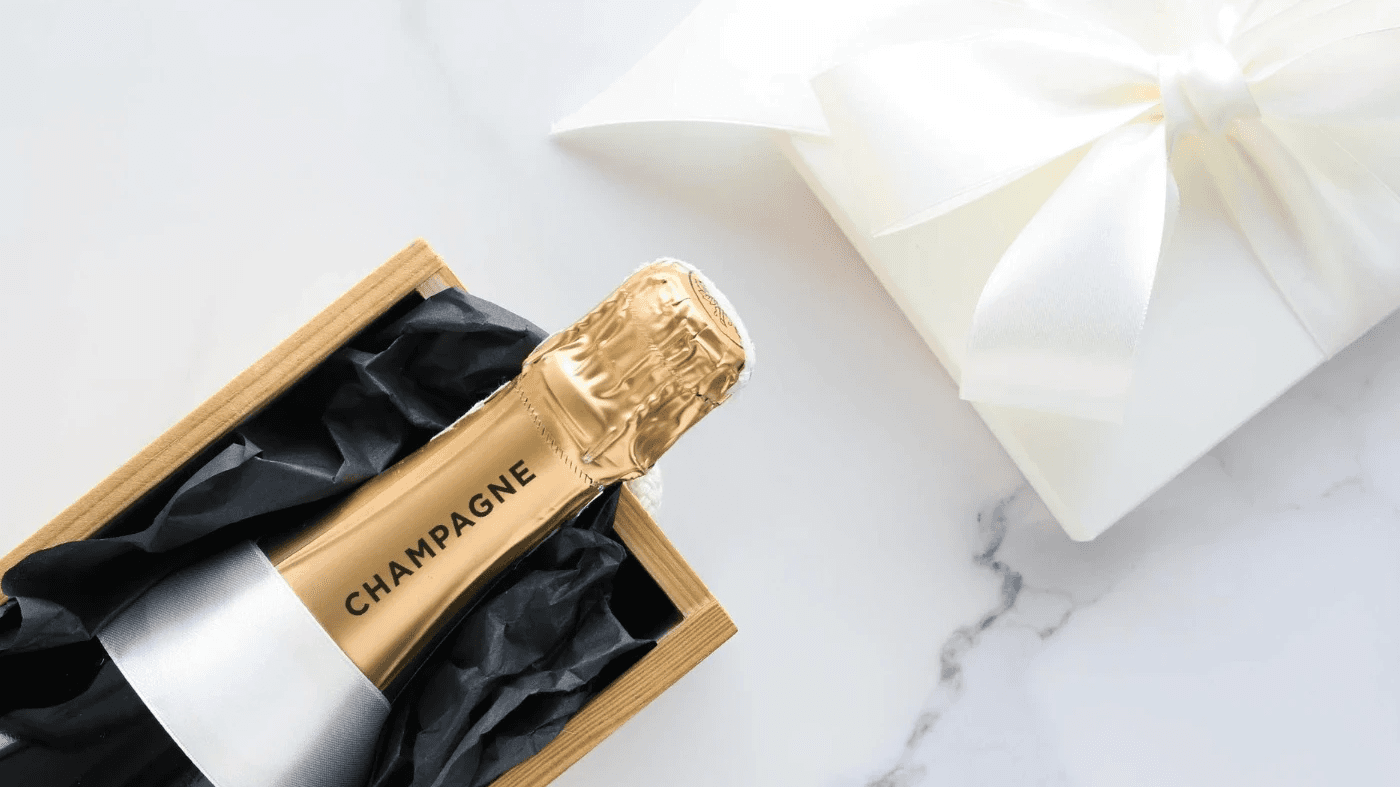
Feature report
Wine Passions Business Wine Gift Service: Create a personalized taste gift
In this vibrant commercial city of Hong Kong, gifting is not only a cultural practice but also an art form. Wine, as an elegant and tasteful gift, not only reflects a company's professional image but also conveys sincere feelings. Wine Passions has specially launched a business wine gift service, providing a one-stop solution for companies to elevate their business relationships.
Wine has become an ideal choice for business gifting due to its intrinsic value and symbolic meaning. It not only symbolizes health and blessings but also showcases the giver's taste and sincerity. In Hong Kong, wine culture is gradually becoming mainstream, with more and more business professionals using it as an important tool for relationship building.
We offer exquisite gift packaging options, including high-end wooden boxes, custom wine bags, or luxury gift boxes, ensuring that every gift showcases your brand image and sincerity.
According to your needs, we can add your company logo or exclusive designs on the packaging, making each bottle of wine a unique brand promotion tool.
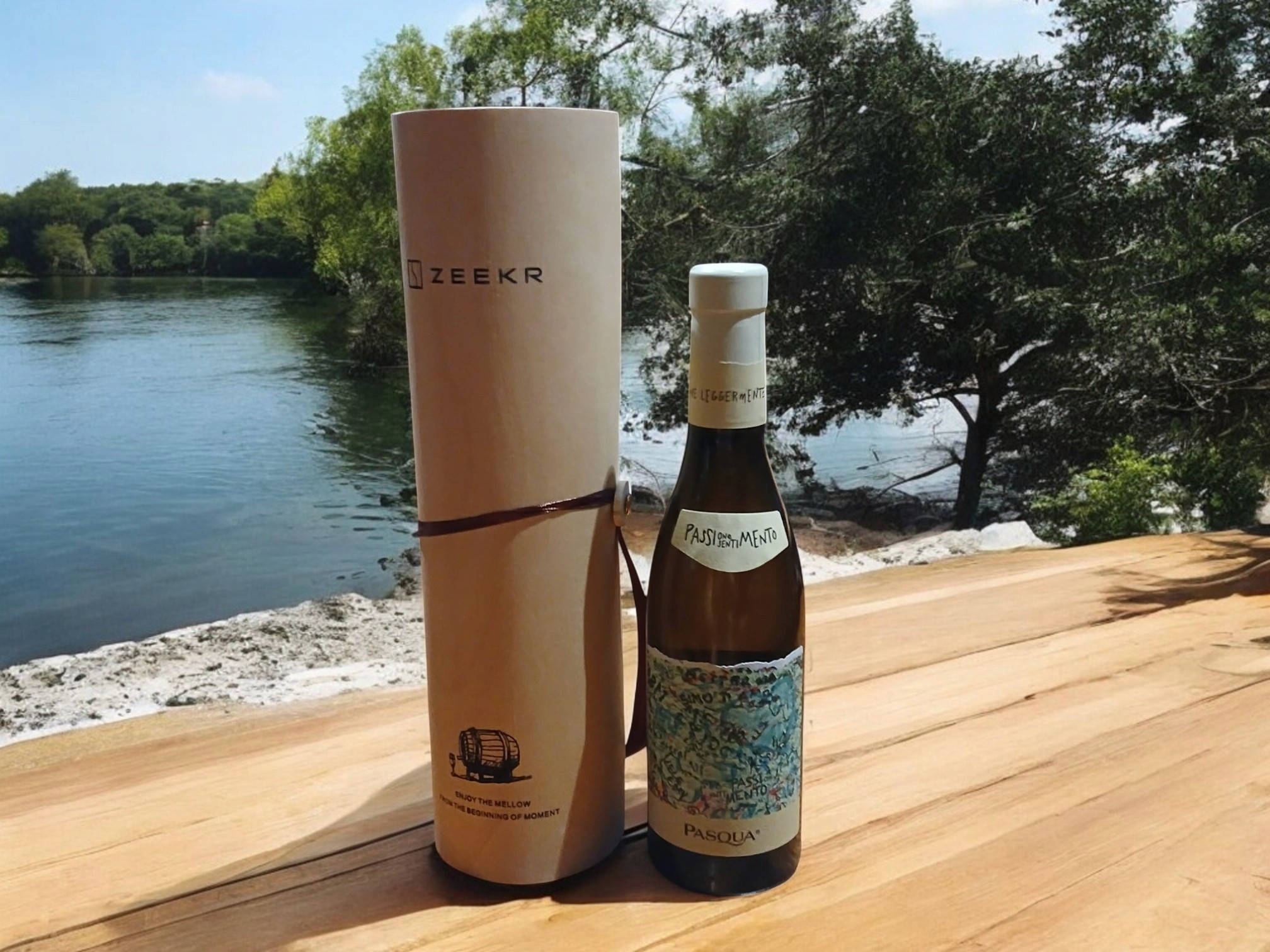
No matter what your budget is, we can recommend suitable wines based on your requirements and provide professional pairing suggestions, such as champagne with desserts, red wine with high-end meals, etc., enhancing the recipient's tasting experience.
We support multi-address delivery, ensuring timely delivery to partners, clients, or employees, reducing your logistical worries.

Each gift is accompanied by a professional tasting guide, including suitable drinking temperatures, pairing suggestions, and storage methods, helping recipients enjoy fine wine better.
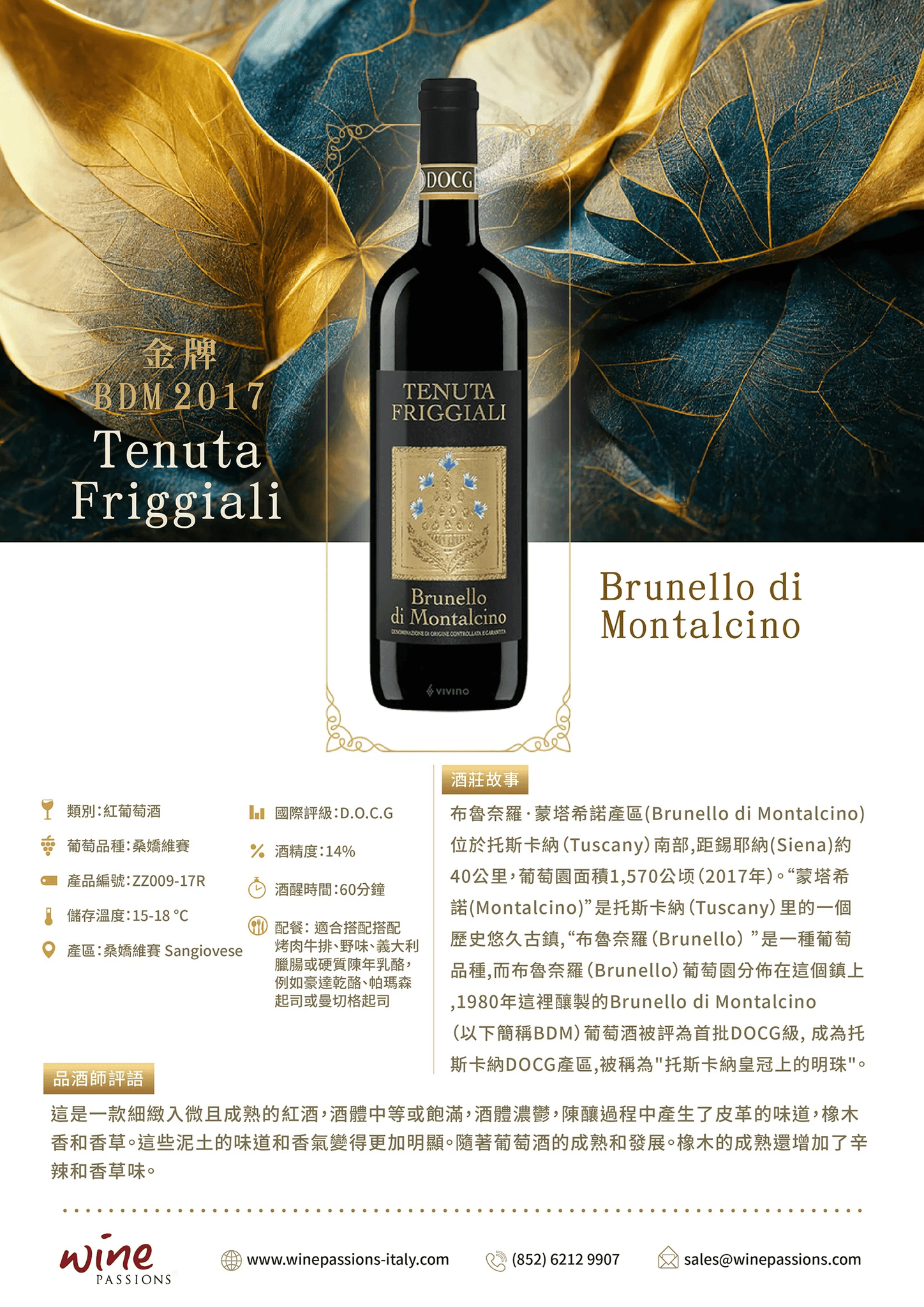
We provide thoughtful after-sales follow-up, including confirming delivery status and recipient feedback, ensuring that every gift perfectly presents your intentions.
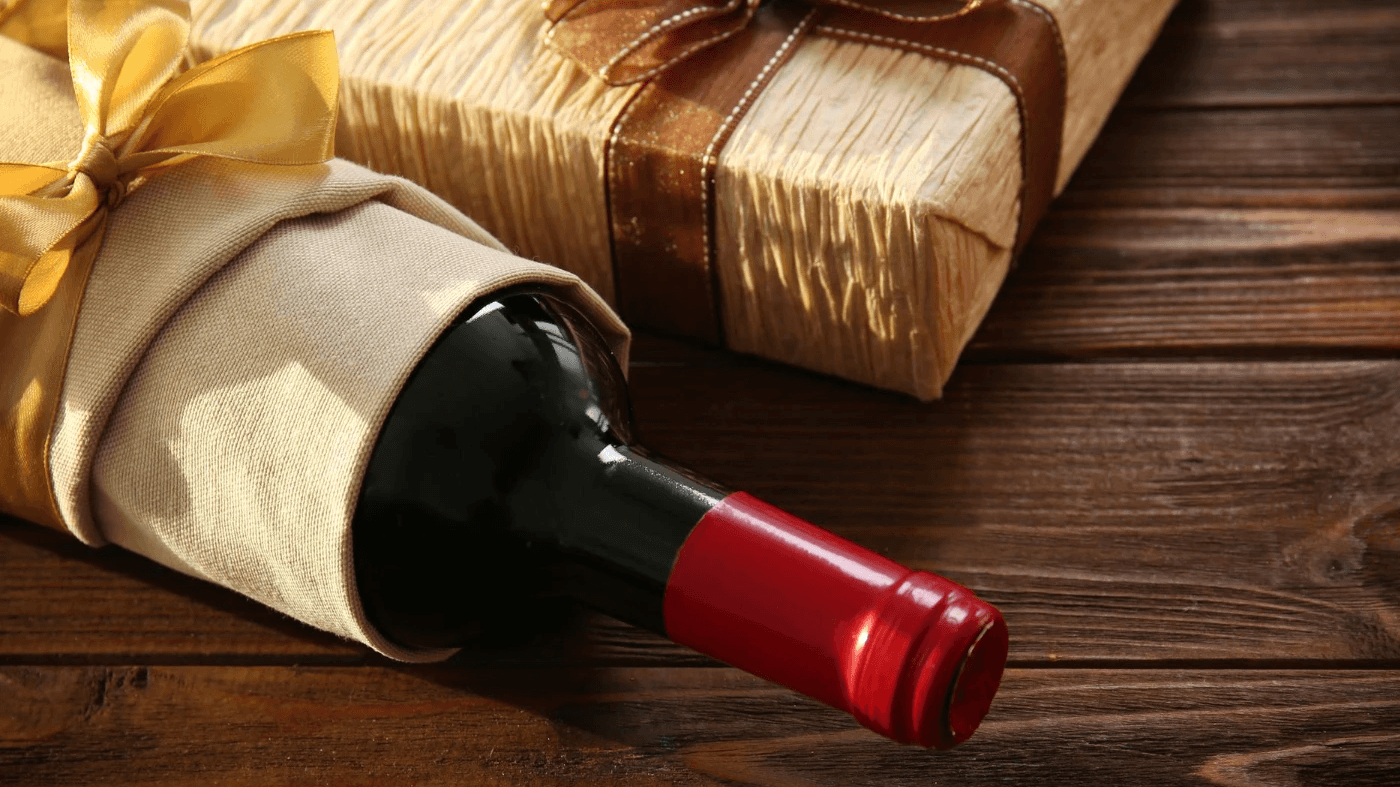
Feature report
Gift-giving guide for Hong Kong: How wine can be your best choice
Hong Kong is a city that blends Eastern and Western cultures, and gift-giving is an art. Wine, as a gift, can further express thoughtfulness and taste. However, choosing the right wine gift is not simple, especially when faced with different recipients. Below is an in-depth exploration of how to give an impressive wine gift in Hong Kong, along with some practical advice.
Why might giving wine cause hesitation?
Although wine is an elegant and popular gift, there are some challenges in its selection and acceptance. Here are two common situations:
Requires expertise: Wine is a beverage that needs to be correctly stored, paired, and consumed to showcase its best flavor. For example, using the wrong type of glass or drinking at the wrong temperature can affect the wine's quality.
Storage challenges: The humid and hot climate in Hong Kong means that general households, if they do not have a professional wine fridge, may opt for the refrigerator. However, compressor vibrations and low temperatures could lead to the loss of aroma. According to the report from Wine Investment, long-term improper storage can cause high-value wines to lose their worth.
The value of the gift is difficult to reflect: If the recipient does not understand how to pair food or choose suitable glassware, even expensive wines may fail to convey their true value.
Tastes can be complex and elusive: People knowledgeable about wine usually have clear preferences regarding flavors, regions, and vinification methods. For example, some may prefer New World wines (like those from Australia or Chile), while others might favor Old World classics (like those from France or Italy). Moreover, details such as tannin levels and intensity of aromas may also influence preferences, according to Cult Wines Hong Kong.
High risk of gifting the wrong type: If the recipient enjoys sweet white wines but receives Chablis, or prefers lighter styles but ends up with port, these errors may render the gift meaningless.

Feature report
The perfect encounter of wine and Hong Kong-style roasted meats: an unexpected delicious combination.
In this culinary paradise of Hong Kong, traditional Cantonese roasted meats have always been an indispensable part of the local dining culture. This article will take you on a journey to explore the wonderful pairing of wine with Cantonese roasted meats, revealing the latest trends in red wine and food pairing, as well as how this innovative combination reflects the current wine trends.
In this culinary paradise of Hong Kong, Cantonese roasted meats have been the soul of the local dining culture, from the fragrant char siu to the crispy-skinned roasted goose, these classic flavors accompany countless individuals in their daily meals. However, with the growing popularity of wine culture, an exciting question arises: how can these seemingly unrelated gastronomic elements be perfectly combined? As an authoritative website that shares wine pairing tips, we will guide you in discovering the stunning pairings of wine with Cantonese roasted meats, seeing how to breathe new life into roasted meats; whether you are a wine lover or a roasted meat enthusiast, this article will open up a dual adventure of taste and culture for you.
The food culture in Hong Kong is never short of surprises. According to data from the Hong Kong Tourism Board's 2023 report, locals consume an average of over 20 kilograms of roasted meats each year, highlighting their significant place in the local dining scene (Hong Kong Tourism Board Food Report 2023). At the same time, the popularity of wine in Hong Kong is rising rapidly, with the total import value of wine reaching $1.2 billion in 2024, a 15% increase compared to the previous year (Hong Kong Wine Import Statistics). This trend has given rise to an interesting question: how can wine and Cantonese roasted meats—two completely different gastronomic delights—be combined?
The answer lies in their complementarity. Cantonese roasted meats are known for their rich fats, the intertwining flavors of sweet and salty, and their multi-layered textures, while wine, especially red wine, can neutralize the greasiness of roasted meats with its tannins and fruity aromas, while enhancing their deliciousness. For instance, the richness of roasted goose complements the structure of Bordeaux blends, while the sweetness of char siu beautifully echoes the soft fruitiness of Pinot Noir. This pairing is a microcosm of the blending of Eastern and Western food cultures, reflecting the unique charm of Hong Kong as a culinary melting pot.
Global food trends are also driving this innovation. According to a report by Wine Enthusiast in 2024, the Asian market is increasingly focusing on localized wine pairings, as consumers desire to incorporate wine into their daily meals rather than limiting it to Western occasions (Wine Enthusiast Asia Trends 2024). In Hong Kong, this means that wine is no longer just the preserve of steak dinners but can dance alongside the classic flavors of roasted meat shops.
Want to know how to pair wine perfectly with Cantonese roasted meats? We have conducted in-depth research into the flavor characteristics of roasted meats and combined them with the principles of red wine and food pairing to recommend the following classic combinations, so you can easily experiment at home or in restaurants:
Palate: Medium acidity, soft tannins, with flavors of blackberry and spice.
Price: Around HK$400-450
Pairing Reason: The rich fat of roasted goose, with its crispy skin and tender meat, is balanced by the Cabernet Sauvignon and Merlot in Bordeaux blends, which can neutralize greasiness and enhance the fresh deliciousness of the meat through the constraining effect of tannins.
Real Example: The Hong Kong restaurant "Yat Gor Roasted Goose" offers classic roasted goose, pairing this wine allows you to experience the balance of oiliness and fruitiness.
Char Siu x Pinot Noir
Palate: Light fruity aromas, with flavors of cherry and raspberry, and smooth tannins.
Price: Around HK$300-350
Pairing Reason: The honey sweetness and slightly charred aroma of char siu complement the elegant fruit flavors of Pinot Noir, the light body does not overpower, allowing the flavors of char siu to become more pronounced.
Real Example: Order a portion of honey-glazed char siu at "Tai Wong Wah Restaurant", pairing it with this wine creates a sweet yet not cloying experience that leaves a lasting impression.
Roast Pork x Shiraz/Syrah
Palate: Intense dark fruit aromas, with pepper and smoky notes, full-bodied.
Price: Around HK$250-300
Pairing Reason: The salty aroma and fatty texture of roast pork contrast with the spiciness and fruitiness of Shiraz, and the rich tannins can cut through greasiness, making every bite full of layers.
Real Example: Try roast pork at "Hing Kee Roasted Meat", pairing it with this wine creates an amazing collision of salty and peppery flavors.

Feature report
A person can truly enjoy: Exploring top cocktail bars (a collection of bars with different styles)
The nightlife in Hong Kong is famous for its diversity and vibrancy, particularly cocktail bars, which attract wine lovers from around the world who are active in different nightlife scenes. Bars are not only social venues but have also become a small haven for many travelers who enjoy exploring alone and local Hong Kong residents looking to relax.
The demand for going to bars alone is growing, especially among young people seeking personal space and social opportunities. According to 2023 data from Statista, about 28% of Asian travelers plan to travel solo, reflecting the increasing trend of solitary activities. As solo trips and the option of visiting bars alone become more popular, especially for busy urbanites, it is a way to unwind and engage in self-exploration. Going to a bar alone provides a quiet space away from daily pressures to enjoy personal time; at the same time, it also offers an opportunity to casually interact with strangers, such as chatting with bartenders and learning more about cocktails.
To understand Hong Kong's cocktail bars, one must first look back at the origins of cocktails. Cocktails can be traced back to the early 19th century in the United States, originally a mixed drink containing spirits, sugar, water, and bitters. The Prohibition era (1920-1933) is considered the golden age of cocktails, with the rise of speakeasies leading to many classic cocktail recipes, such as Martini and Negroni.
The cocktail culture in Hong Kong is deeply influenced by its colonial history and international port status. In 1928, The Peninsula Hong Kong opened, and its bar became one of the first places to offer cocktails. Subsequently, in the 1980s and 90s, the surge of bars in Lan Kwai Fong and Soho laid the foundation for Hong Kong's cocktail culture.
In recent years, Hong Kong's bartenders have been innovating, driving the popularity of craft cocktails, attracting drinkers from around the globe. According to the 2024 Hong Kong Nightlife Industry Report, the bar industry has an annual revenue of HKD 5 billion, with cocktail bars accounting for 20% of the market share, reflecting their economic impact.
Although fewer bars are found in the New Territories, they provide a peaceful environment suitable for solo visits.
Address: 1 Anping Street, Sha Tin, Hong Kong, Level 30, Courtyard by Marriott Sha Tin
Business Hours:
Monday to Thursday 12:00 - 23:30
Friday 12:00 - 01:00
Saturday 15:30 - 01:00
Sunday 15:30 - 23:30
Public Holidays 15:30 - 23:30
Public Holiday Eves 12:00 - 01:00
Recommended Drinks: Front Runner, American Pharaoh
Recommendation Reason: LEVELthirty Rooftop Lounge, located on the 30th floor of Courtyard by Marriott Sha Tin, is a top-floor bar combining stunning views with a high-quality dining experience. The lounge features comfortable indoor seating and an outdoor terrace overlooking the beautiful scenery of Sha Tin Racecourse, Tolo Harbour, and Castle Peak River, particularly enchanting at sunset or under the twinkling night lights. The restaurant offers a variety of creative cocktails, champagne, and both Western and Chinese delicacies, such as Canadian roasted pork rack and seafood pasta with cream sauce, making it a perfect choice for dining or casual sipping.
Is reservation needed: Reservations are recommended on weekends.

Address: Shop 1, Ground Floor, 18 Tai Chung Road, Tsuen Wan
Business Hours: Monday to Sunday 16:00 PM - 03:00 AM (Bar service typically starts in the afternoon)
Recommended Drinks: Song, Tea Tale
Recommendation Reason: COMO bar, located near the Nan Fung cotton mill in Tsuen Wan, is a bar restaurant that combines stylish decor with high-quality Western cuisine. The interior is dominated by black, white, and gray tones, with a spacious design and high ceilings, offering sofa seating, elevated seating, and bar seating, creating an atmosphere that blends culture and fashion. The menu is regularly updated, featuring high-quality dishes such as Spanish Iberico pork loin, paired with creative drinks, making it a great place to relax and enjoy gourmet food.
Is reservation needed: Typically no reservation is needed.


Feature report
Wine Passions Business Wine Gift Service: Create a personalized taste gift
In this vibrant commercial city of Hong Kong, gifting is not only a cultural practice but also an art form. Wine, as an elegant and tasteful gift, not only reflects a company's professional image but also conveys sincere feelings. Wine Passions has specially launched a business wine gift service, providing a one-stop solution for companies to elevate their business relationships.
Wine has become an ideal choice for business gifting due to its intrinsic value and symbolic meaning. It not only symbolizes health and blessings but also showcases the giver's taste and sincerity. In Hong Kong, wine culture is gradually becoming mainstream, with more and more business professionals using it as an important tool for relationship building.
We offer exquisite gift packaging options, including high-end wooden boxes, custom wine bags, or luxury gift boxes, ensuring that every gift showcases your brand image and sincerity.
According to your needs, we can add your company logo or exclusive designs on the packaging, making each bottle of wine a unique brand promotion tool.

No matter what your budget is, we can recommend suitable wines based on your requirements and provide professional pairing suggestions, such as champagne with desserts, red wine with high-end meals, etc., enhancing the recipient's tasting experience.
We support multi-address delivery, ensuring timely delivery to partners, clients, or employees, reducing your logistical worries.

Each gift is accompanied by a professional tasting guide, including suitable drinking temperatures, pairing suggestions, and storage methods, helping recipients enjoy fine wine better.

We provide thoughtful after-sales follow-up, including confirming delivery status and recipient feedback, ensuring that every gift perfectly presents your intentions.